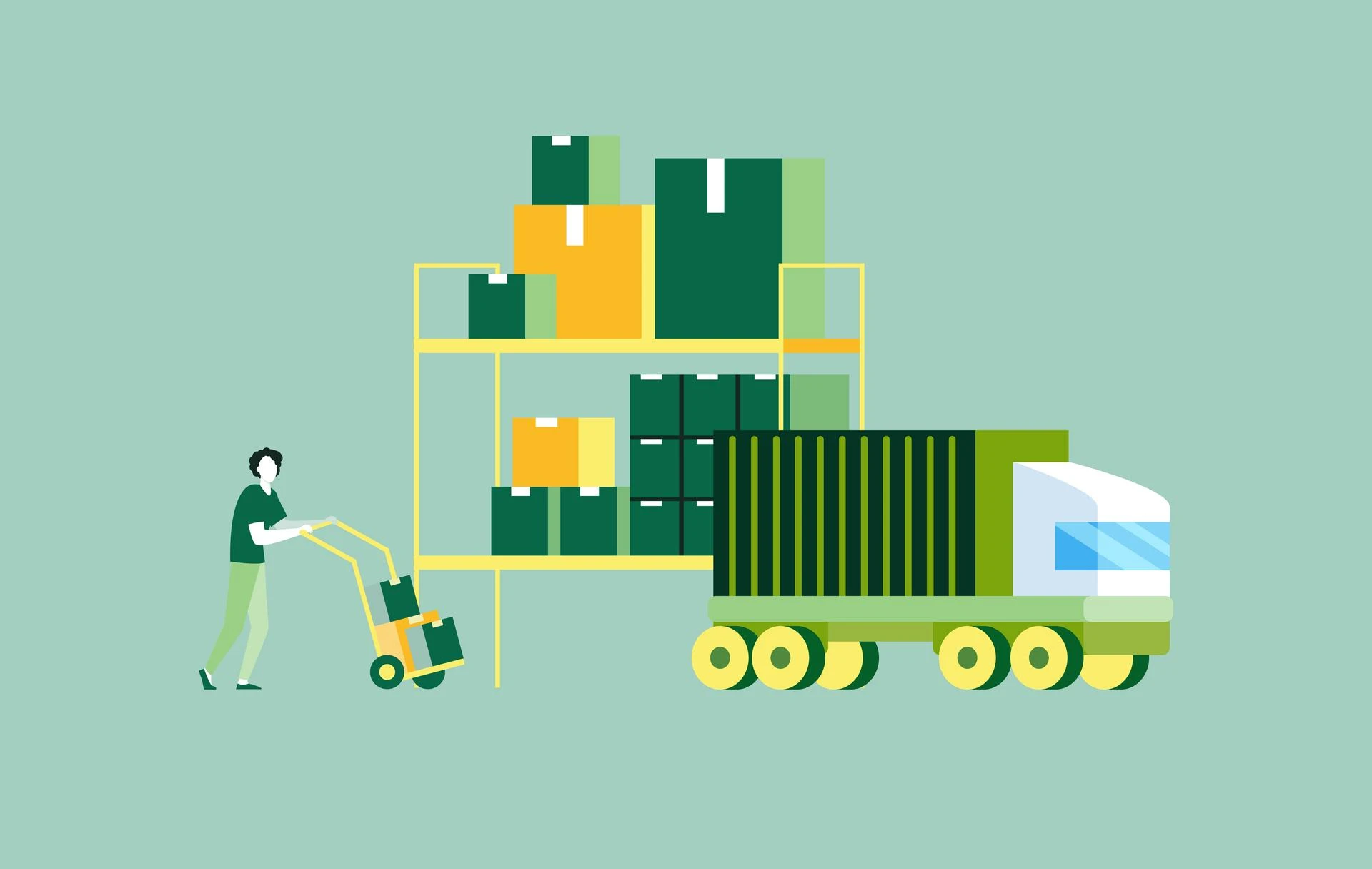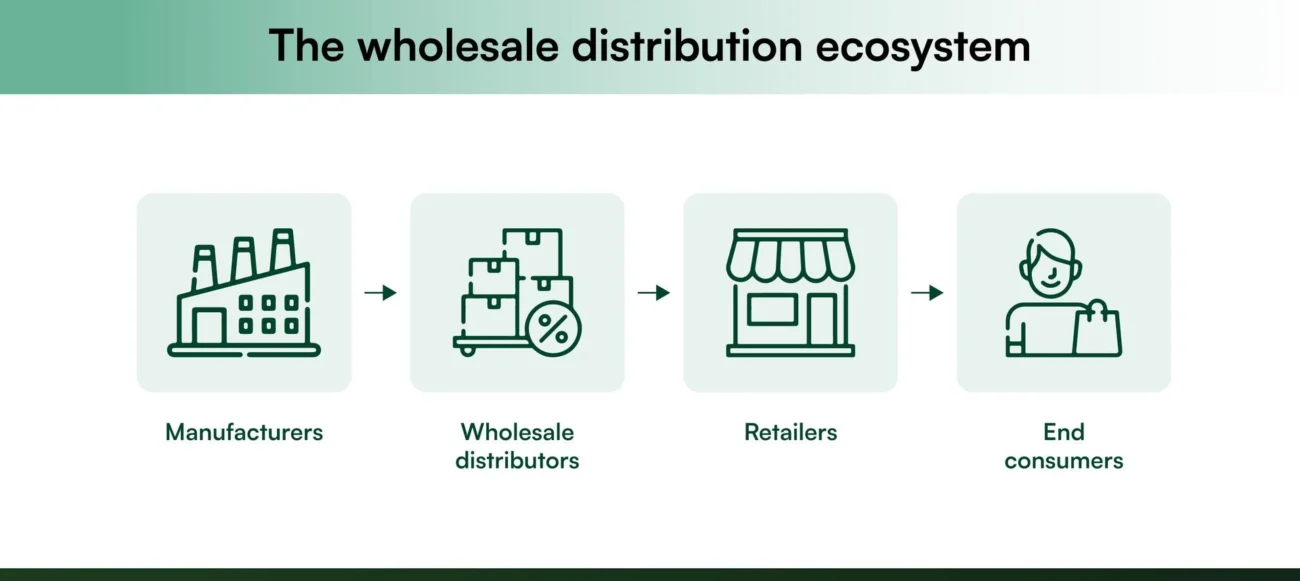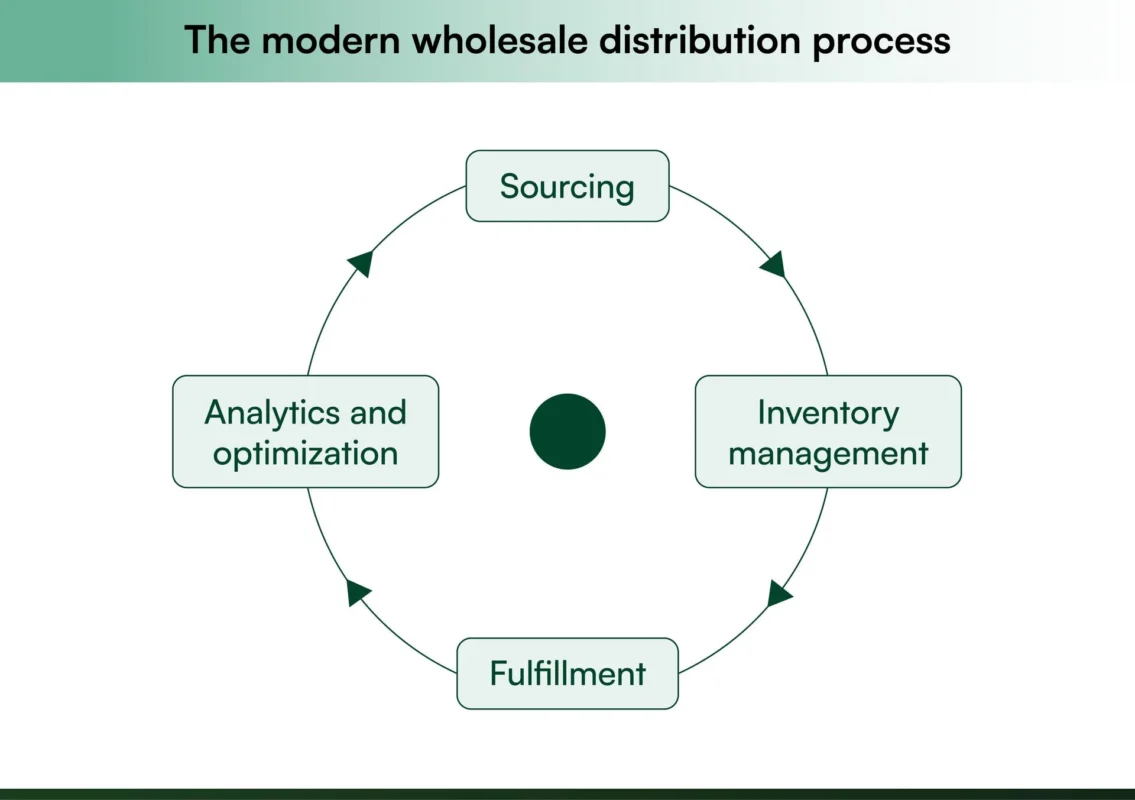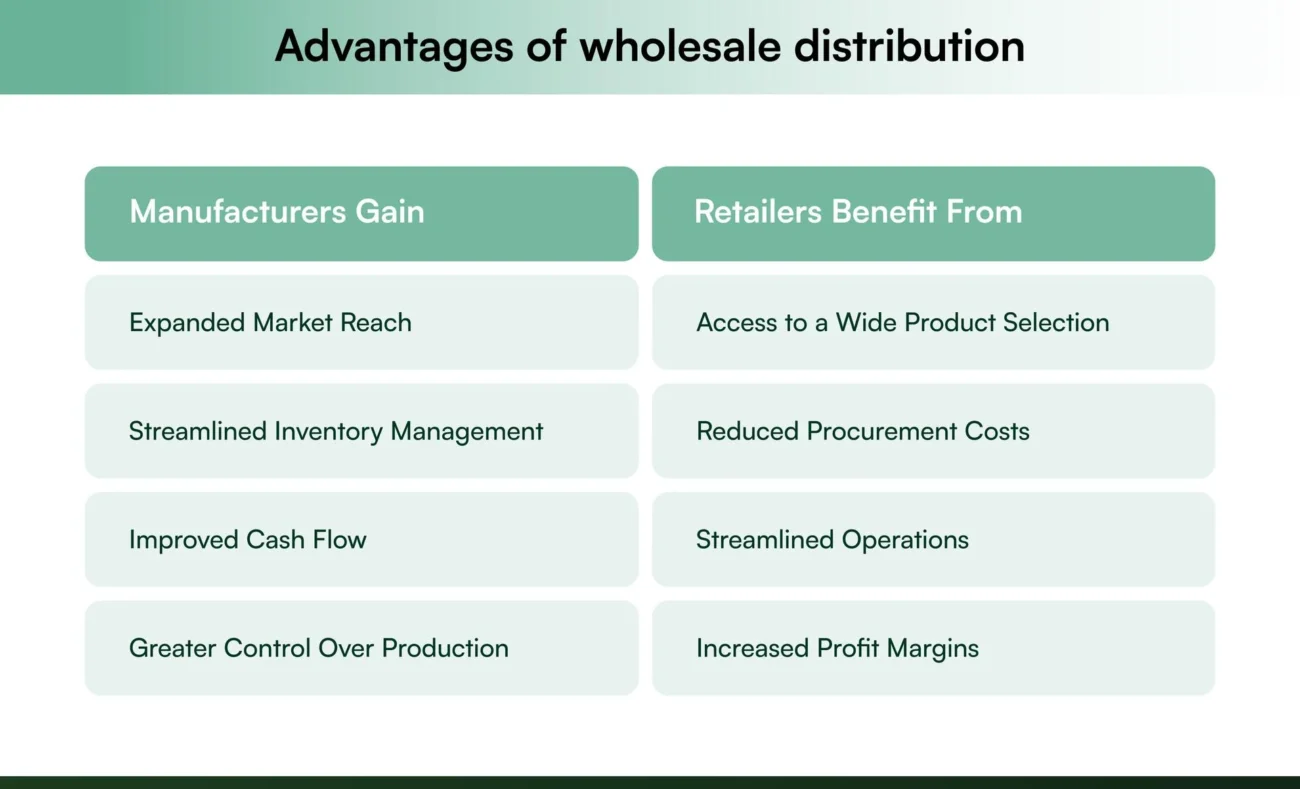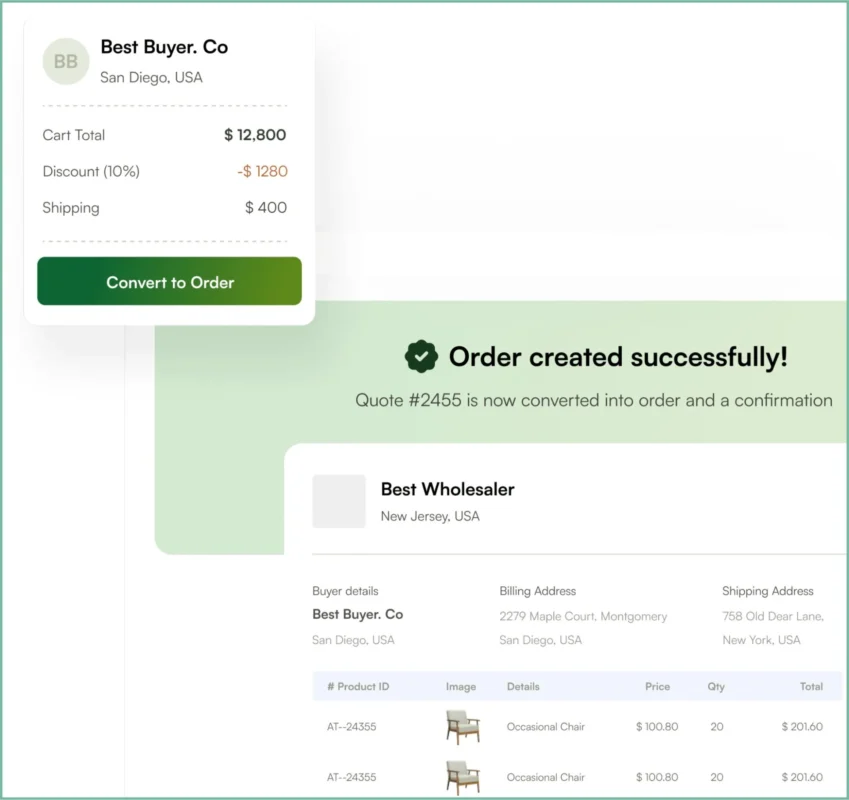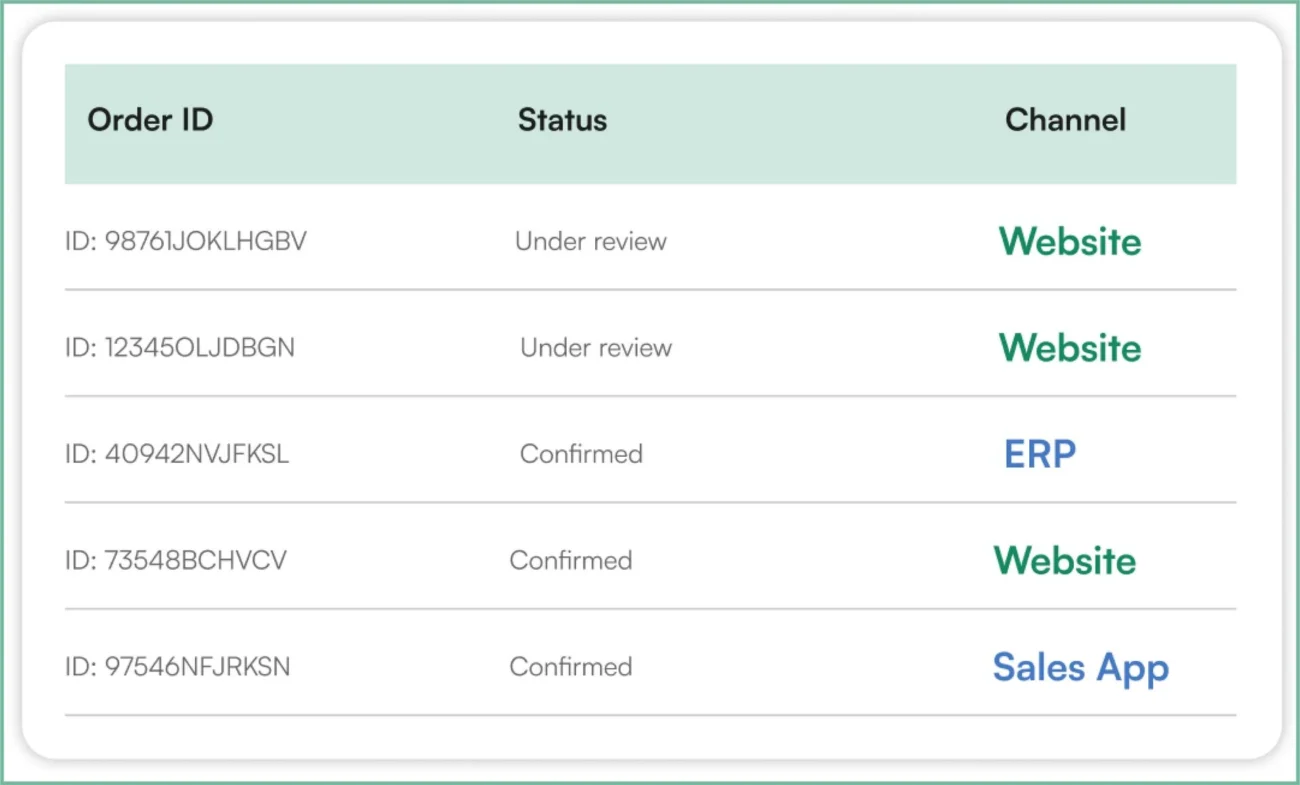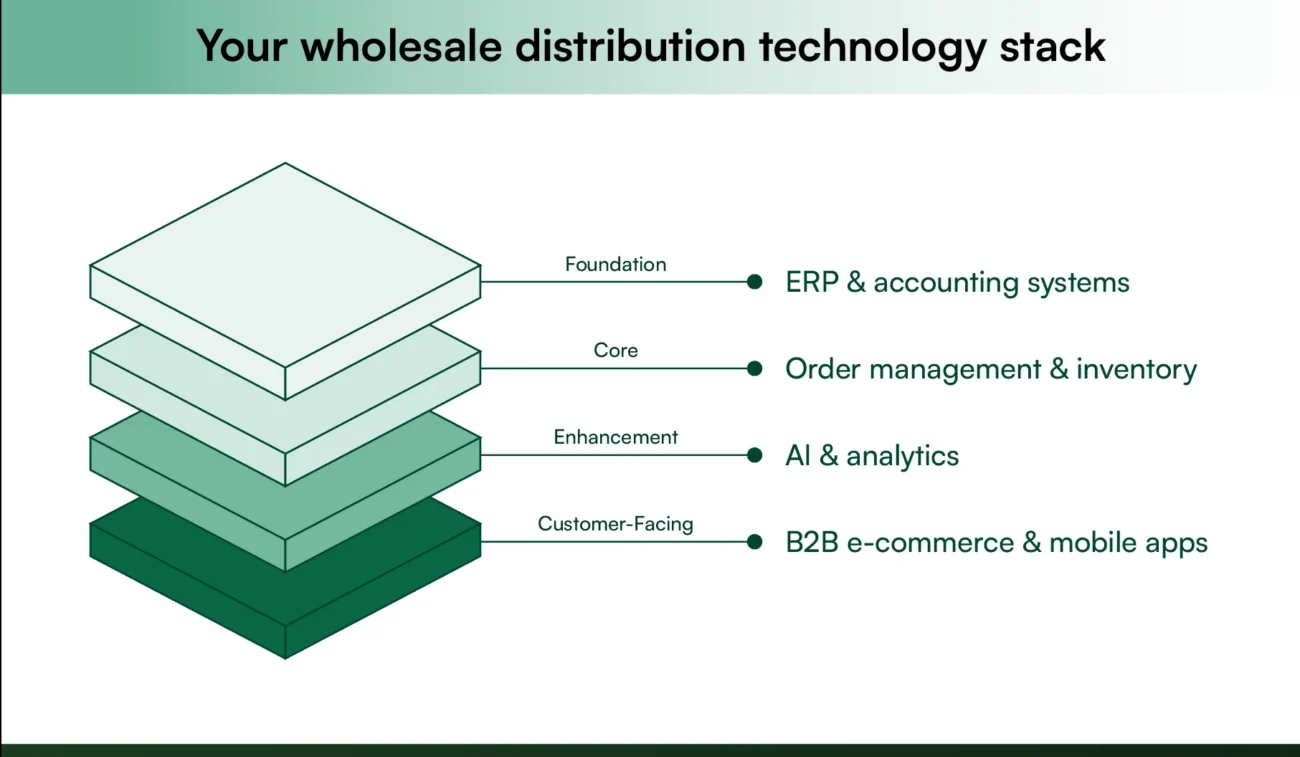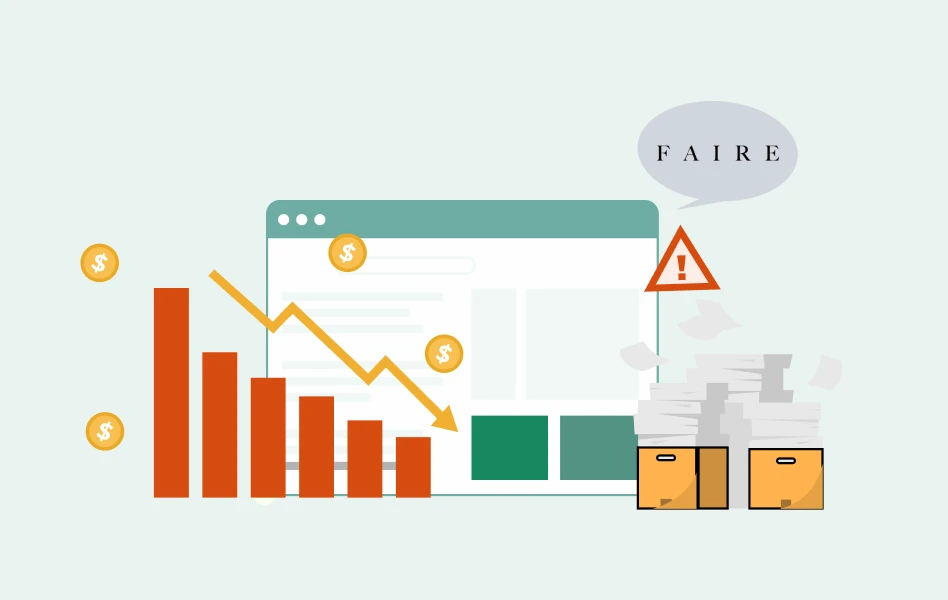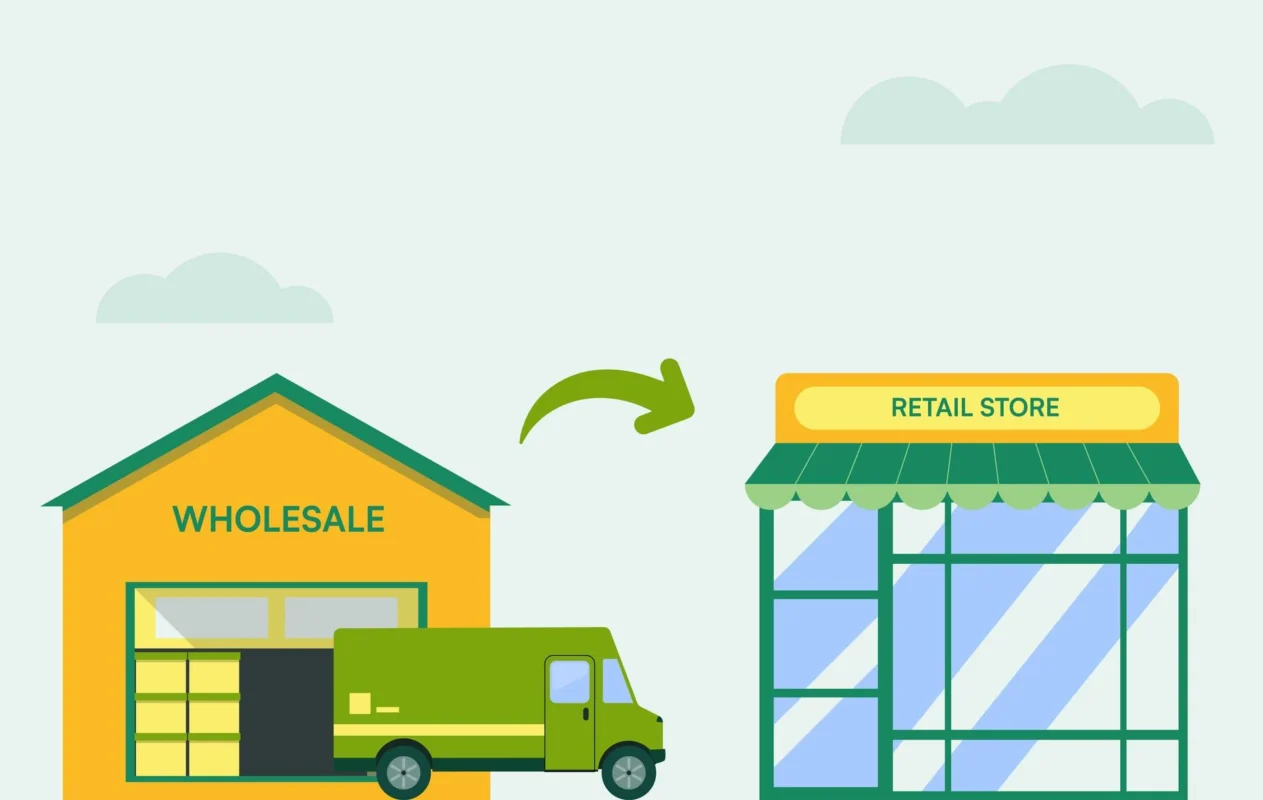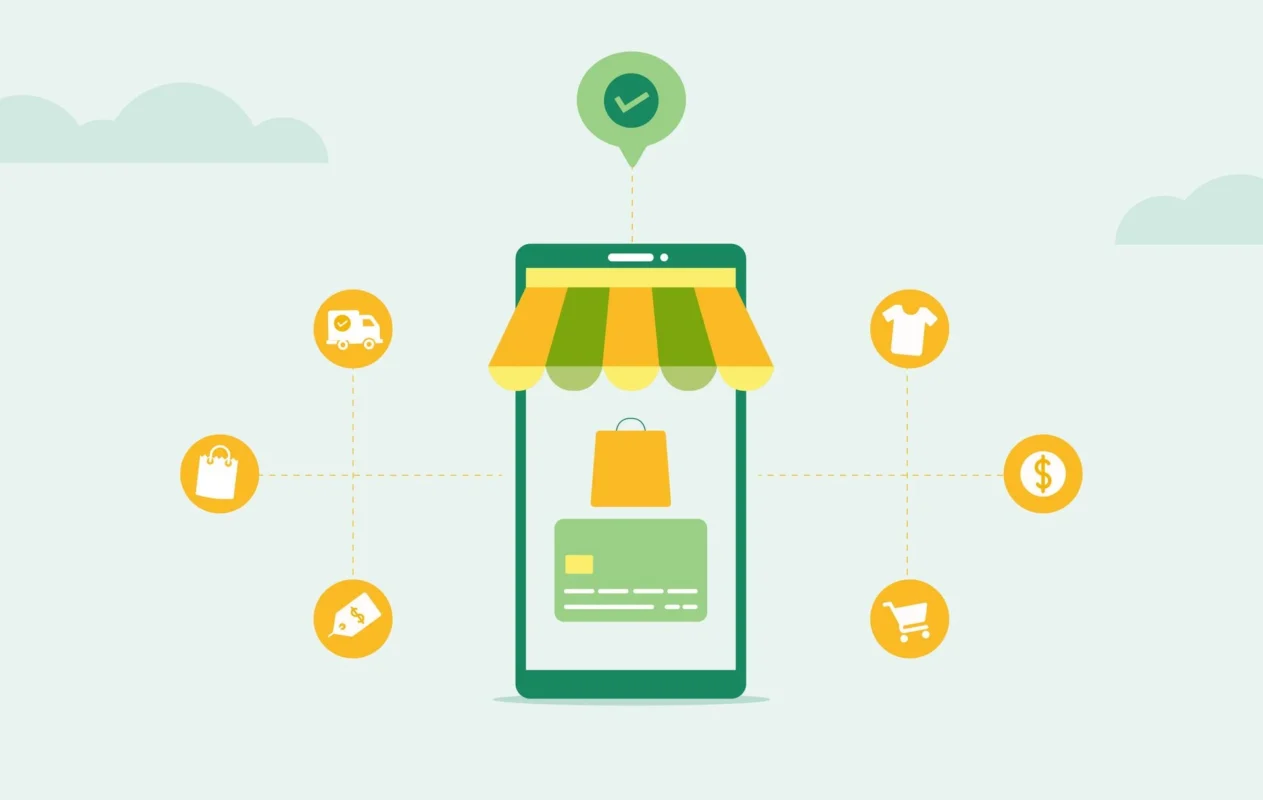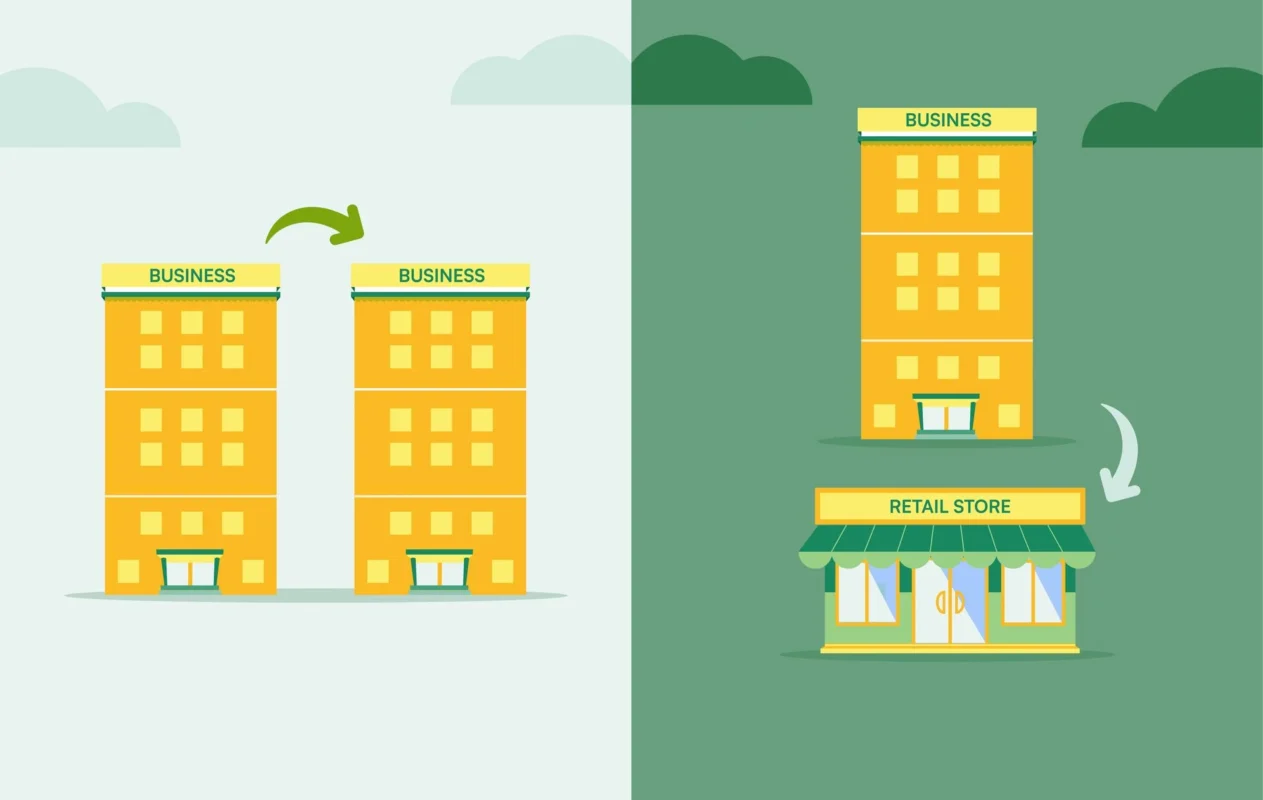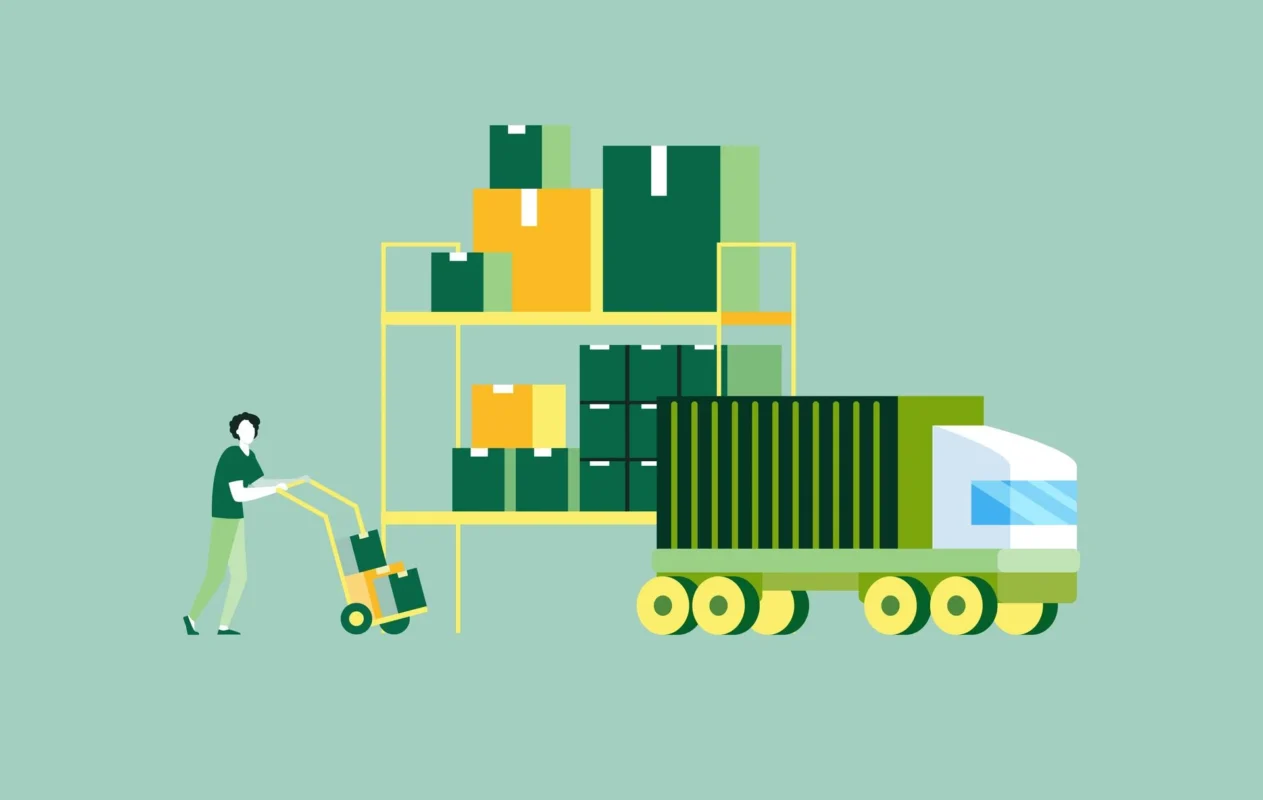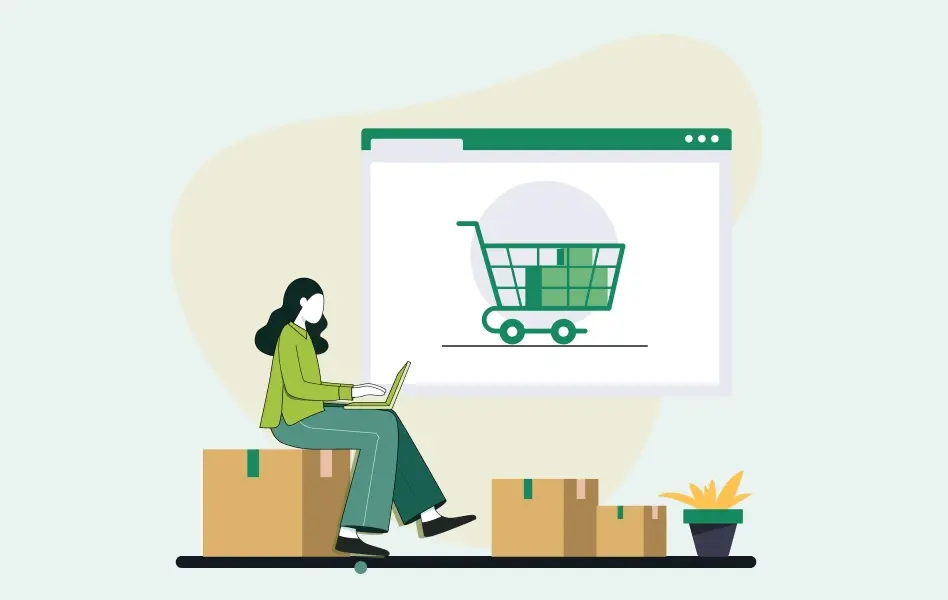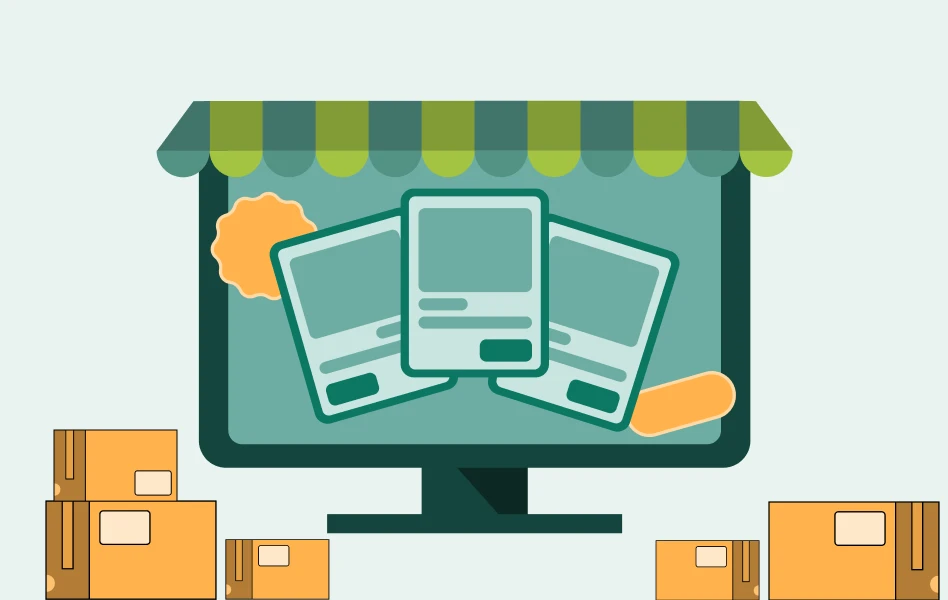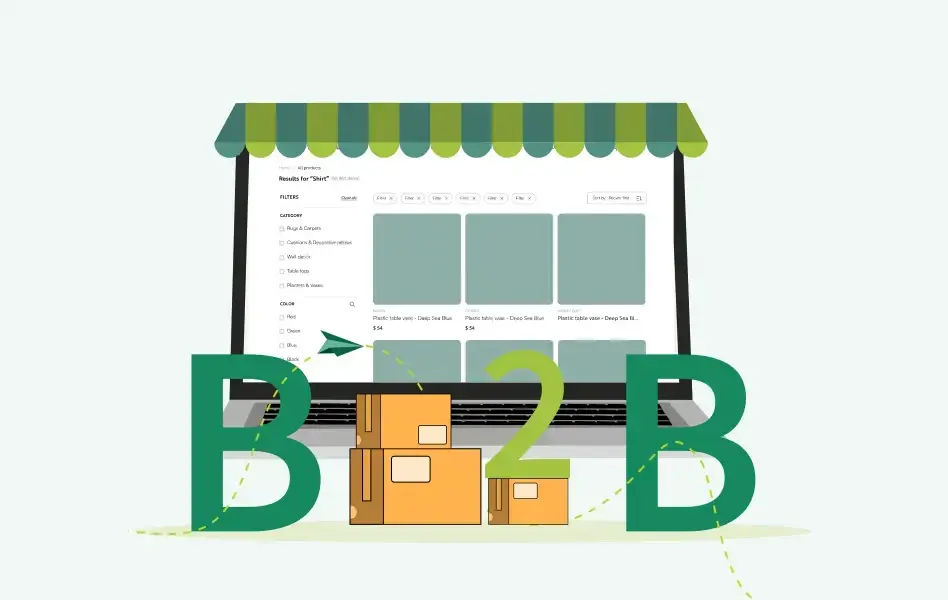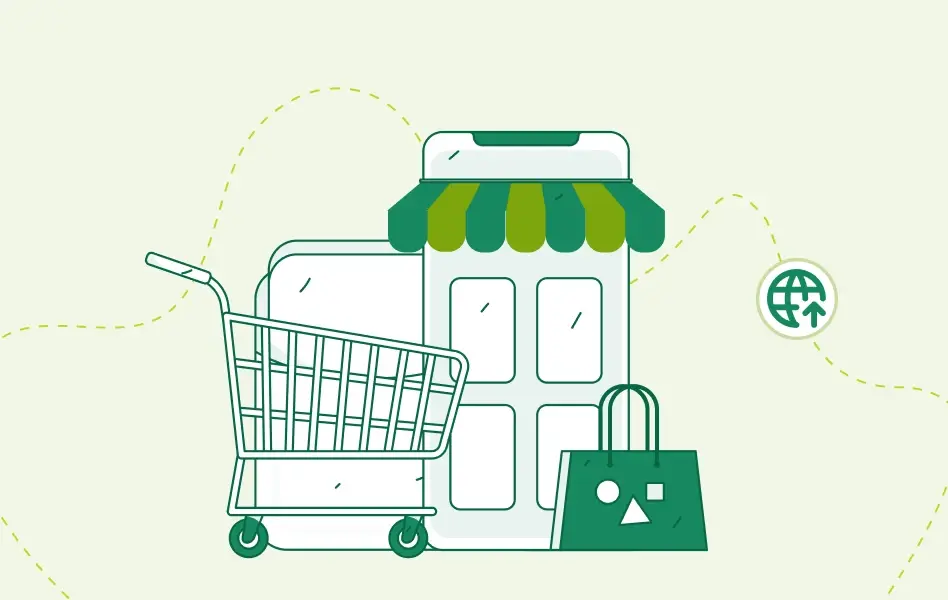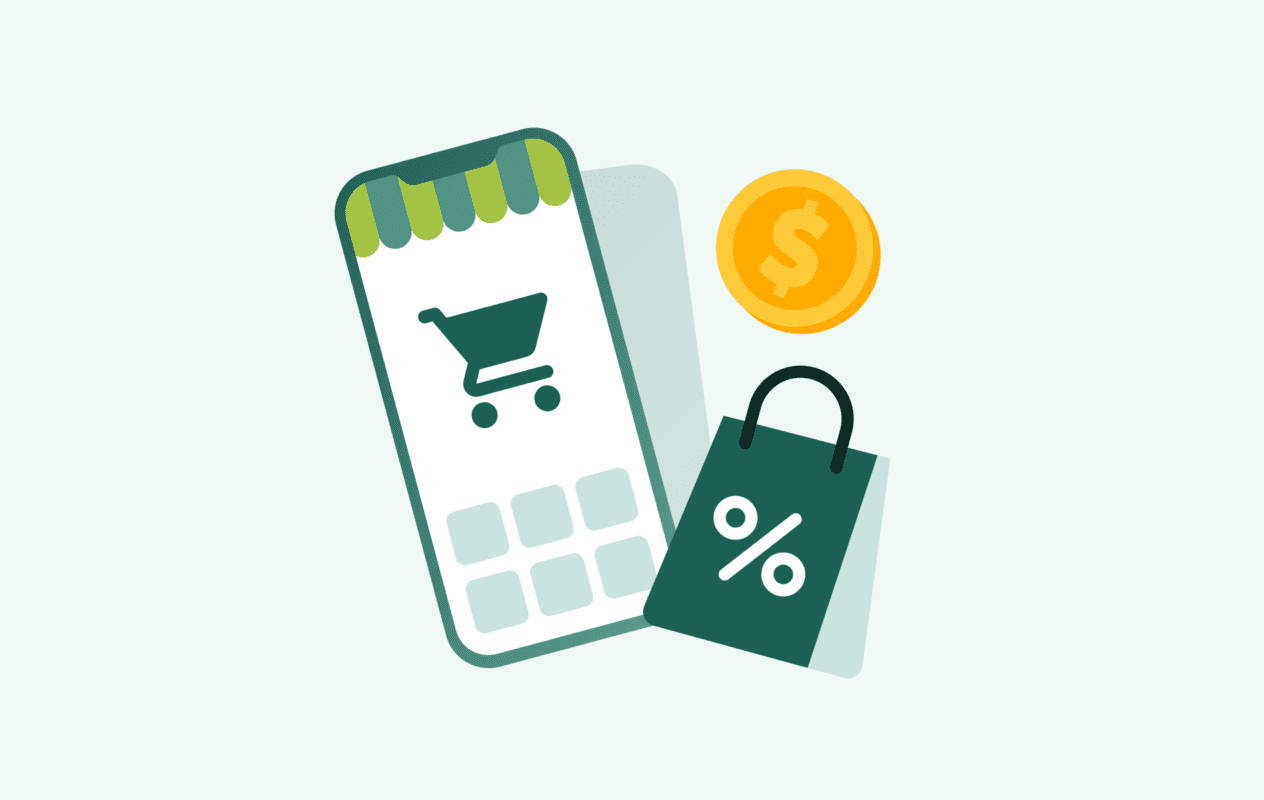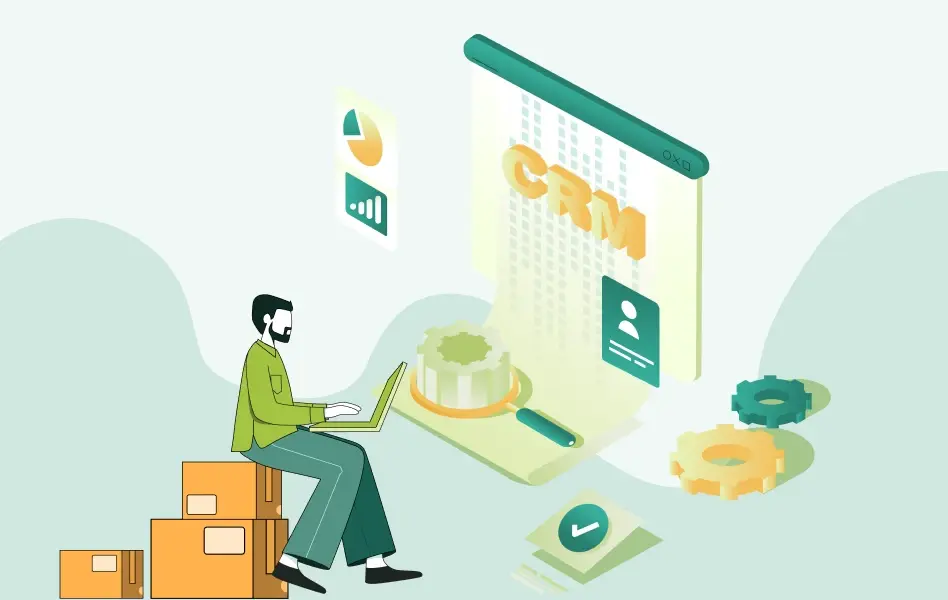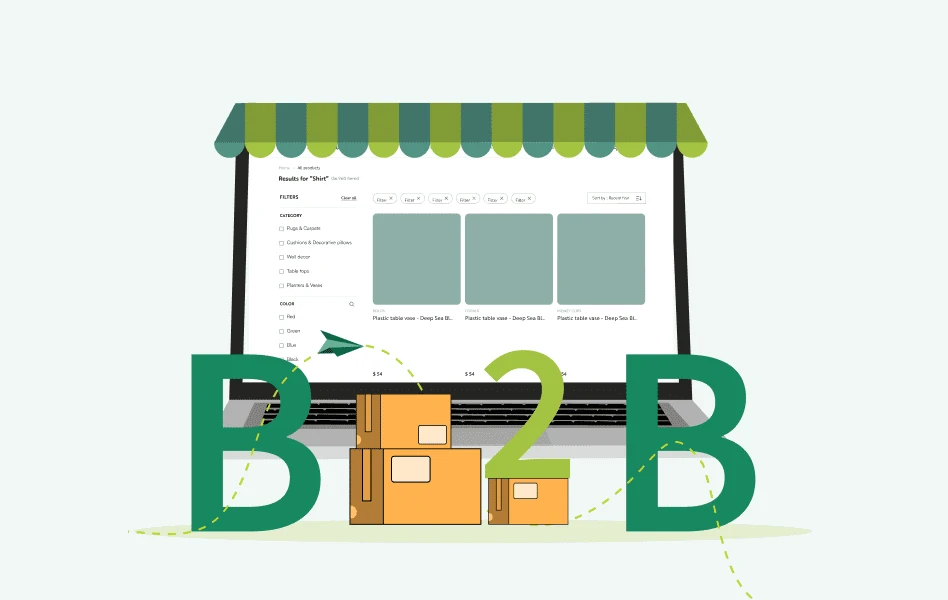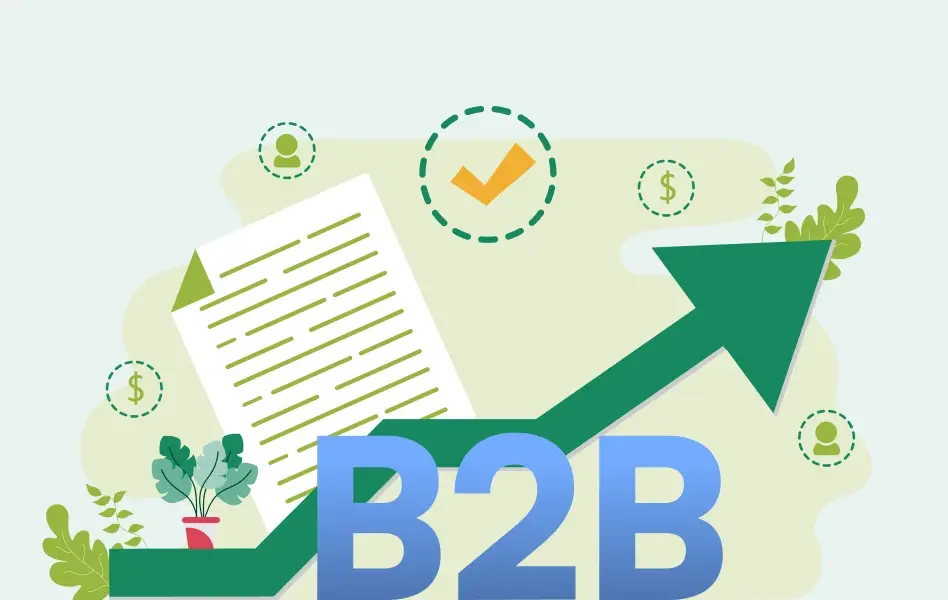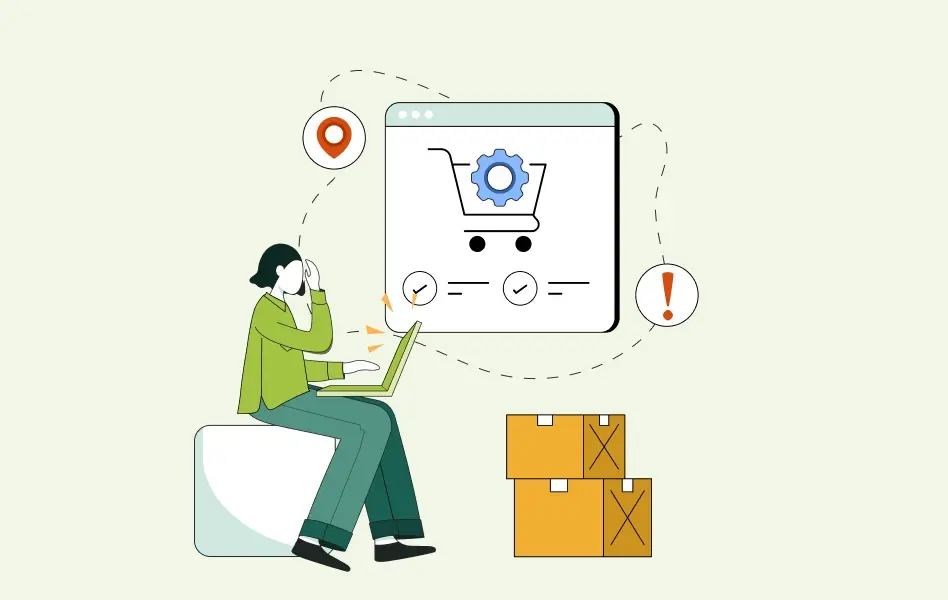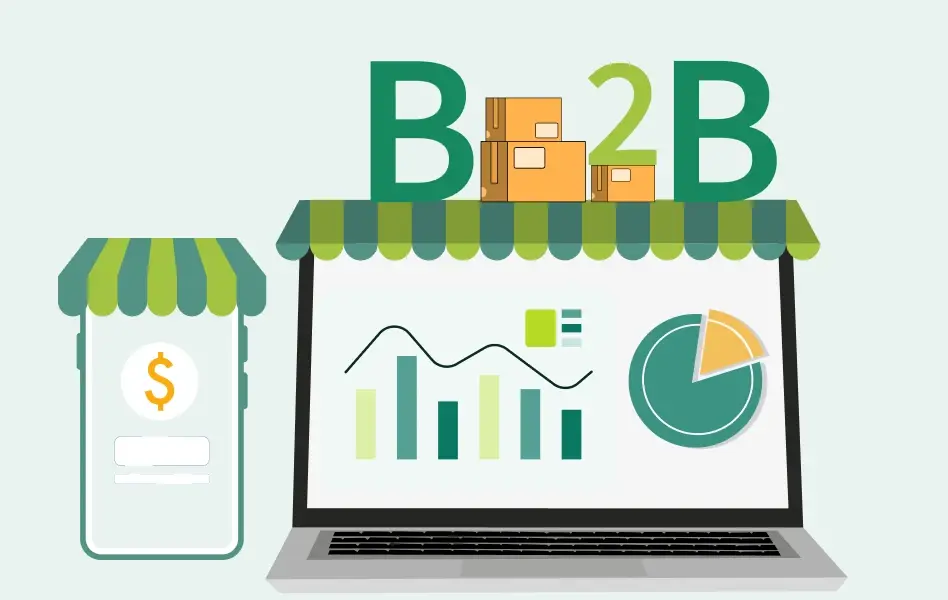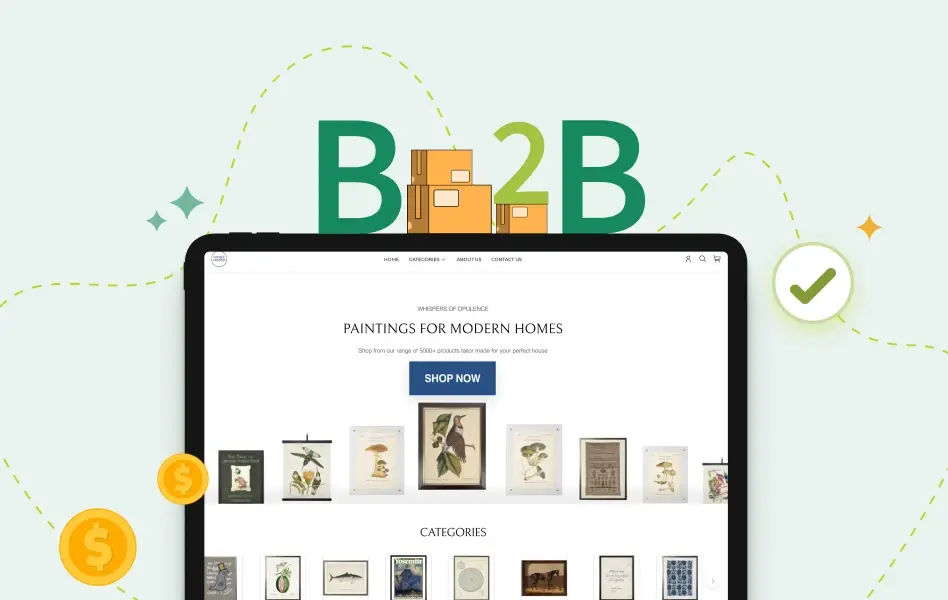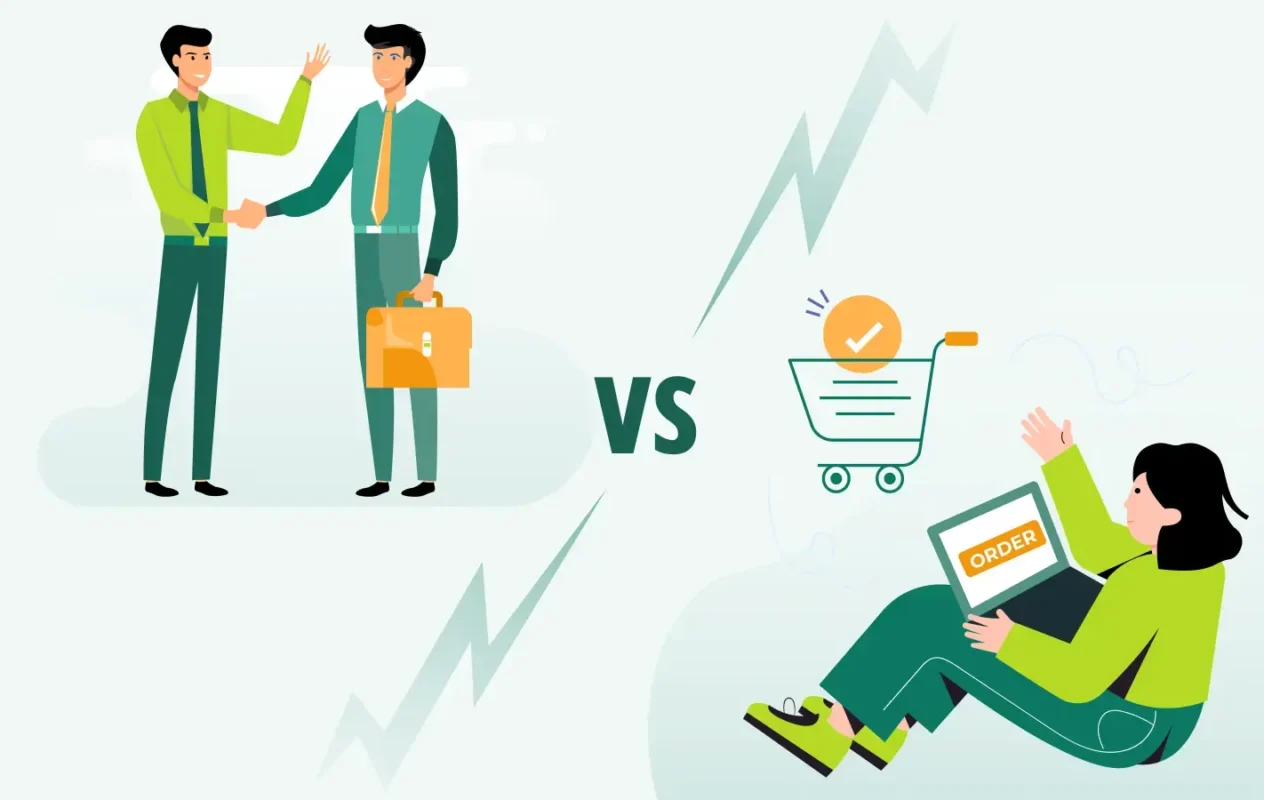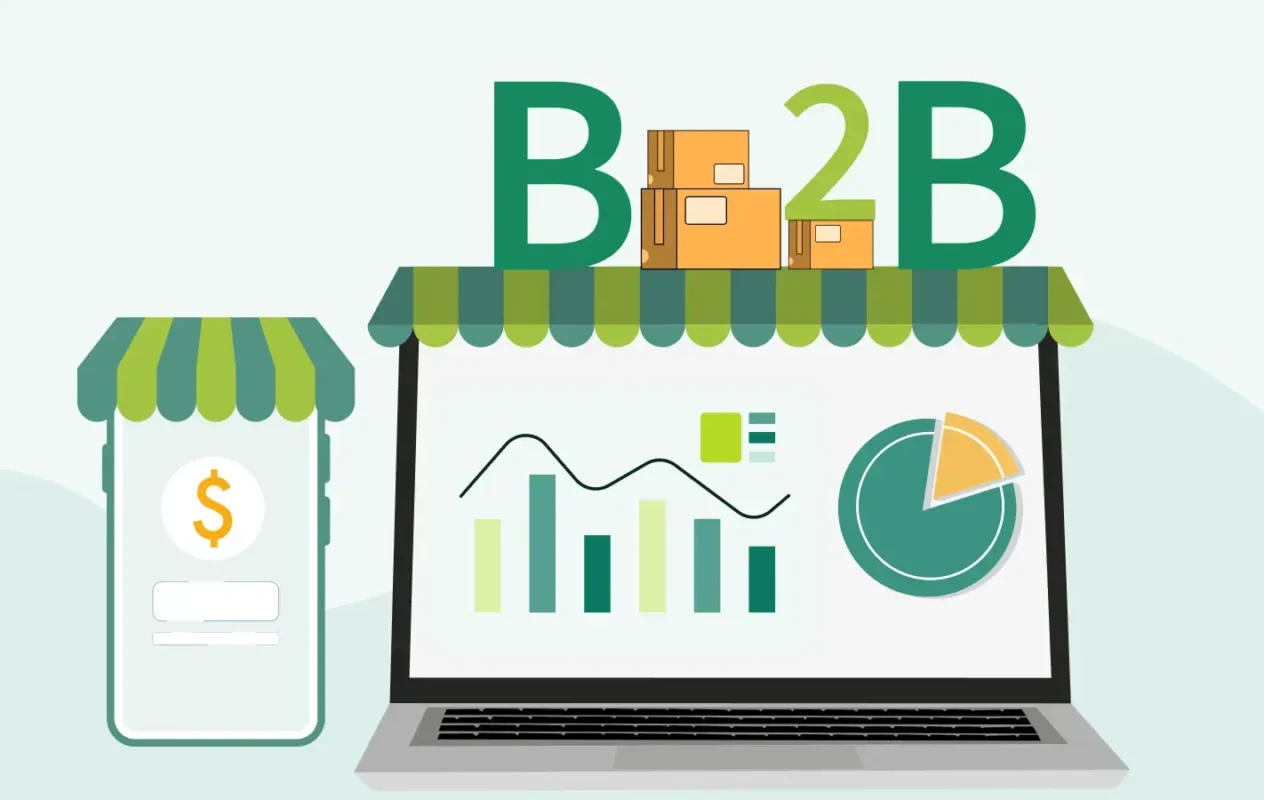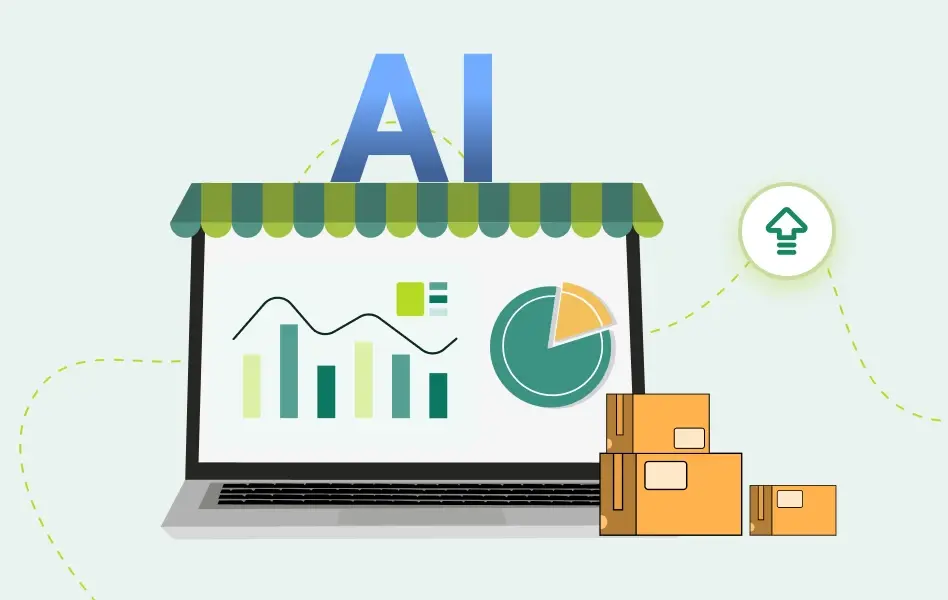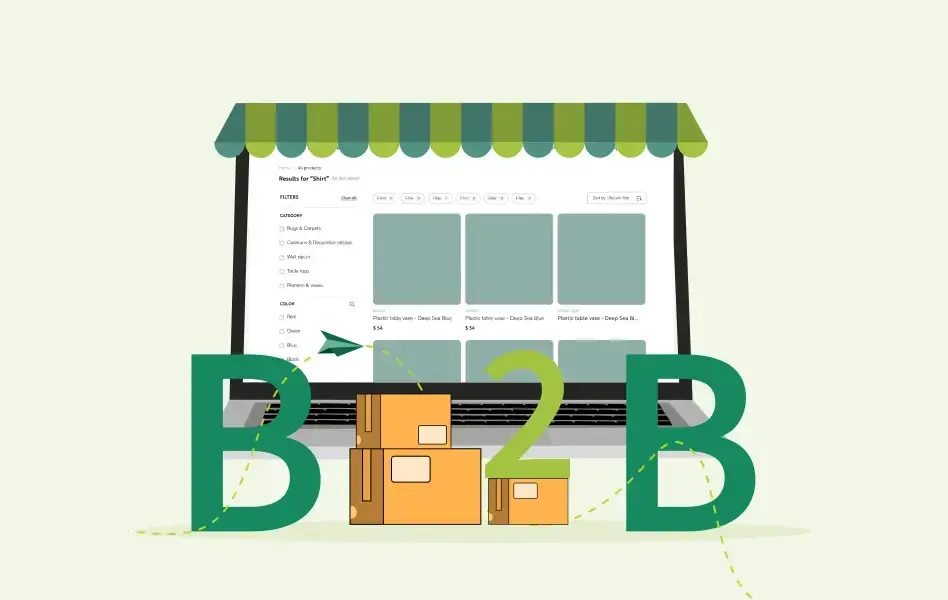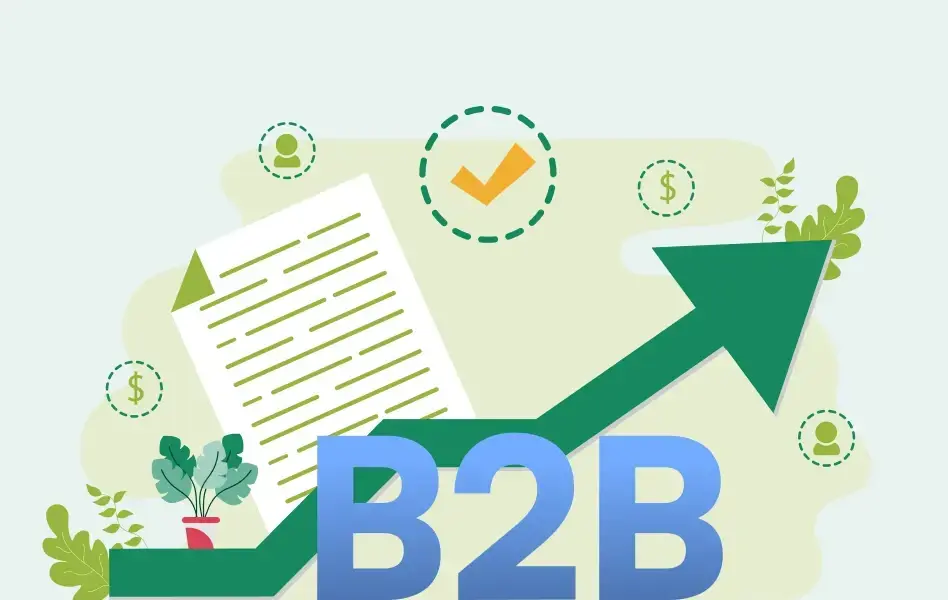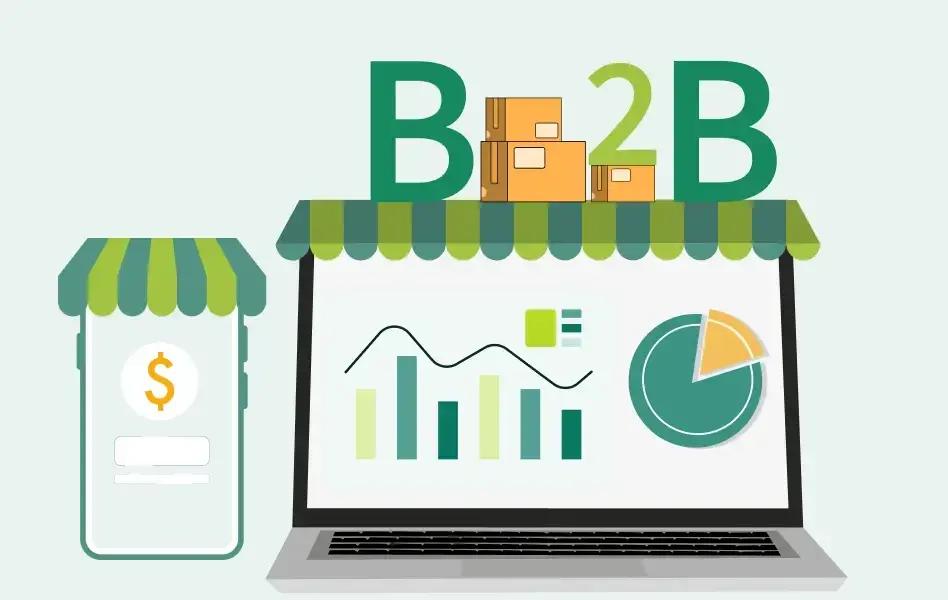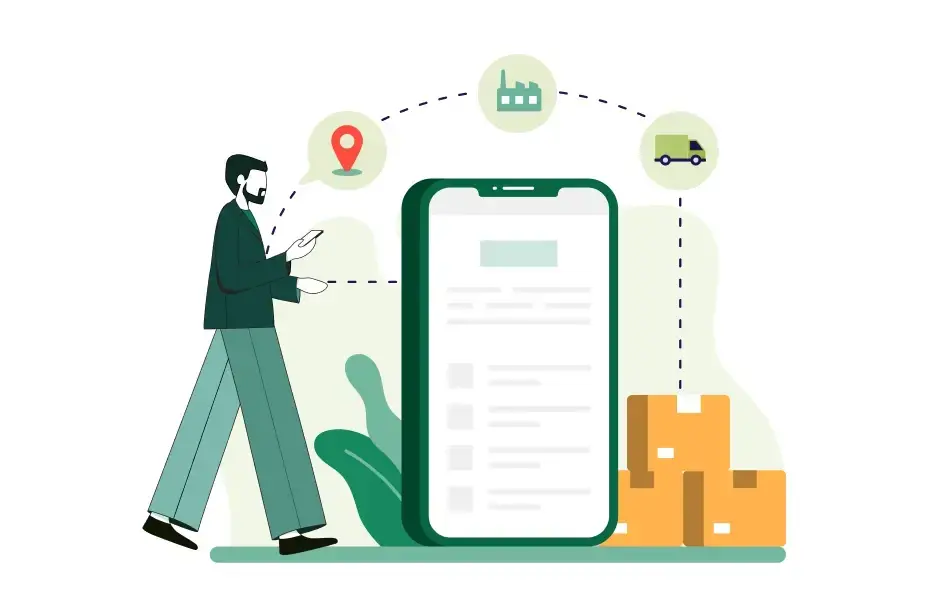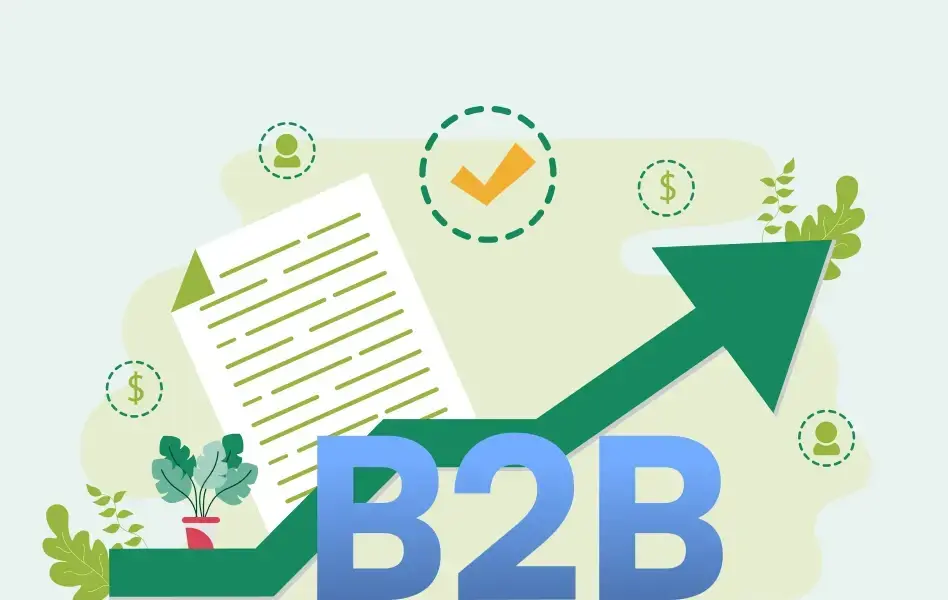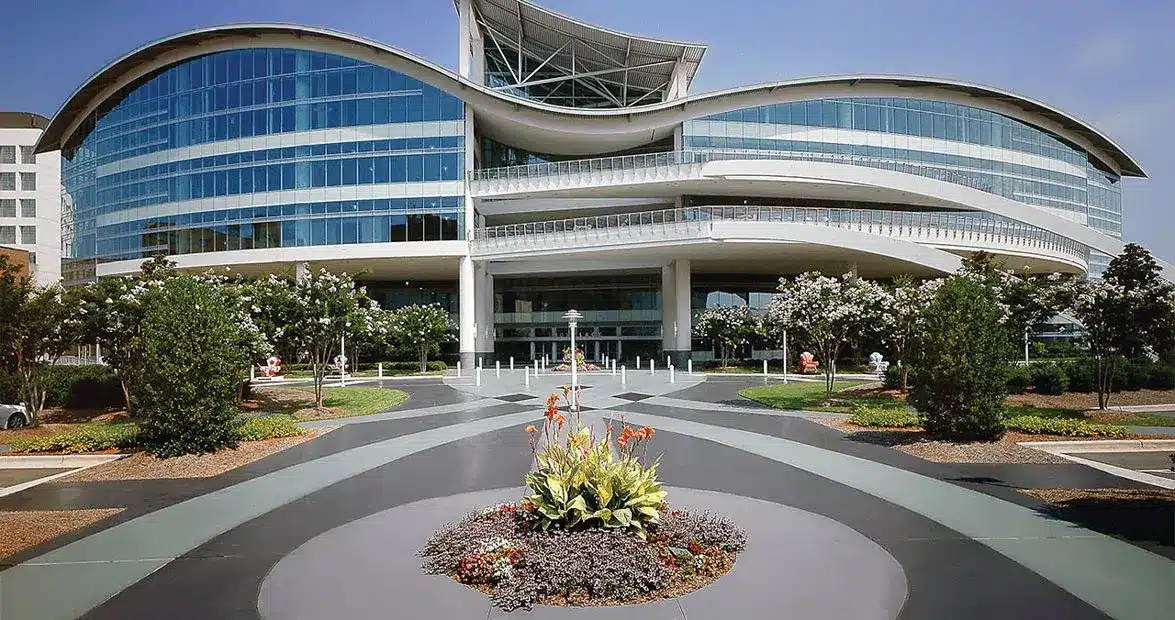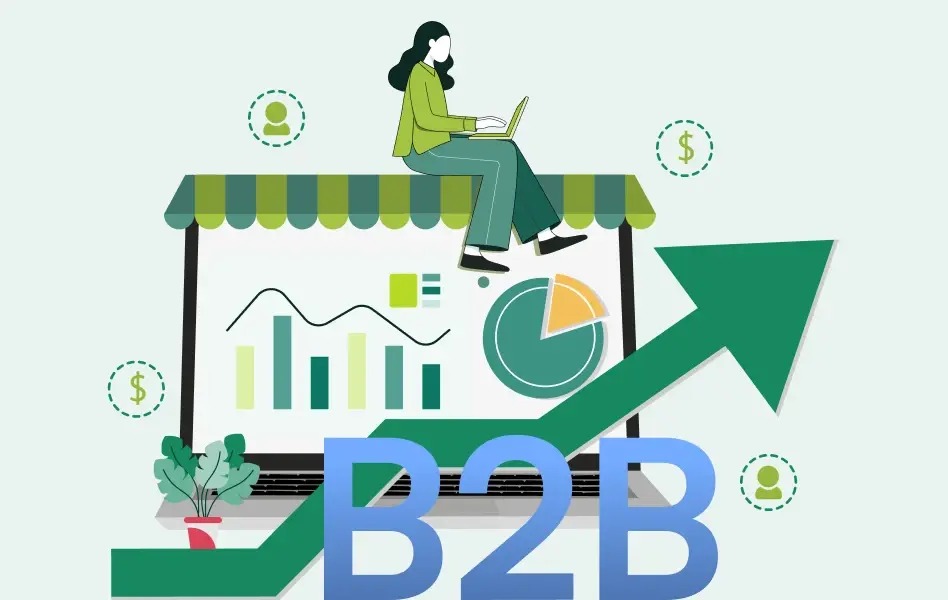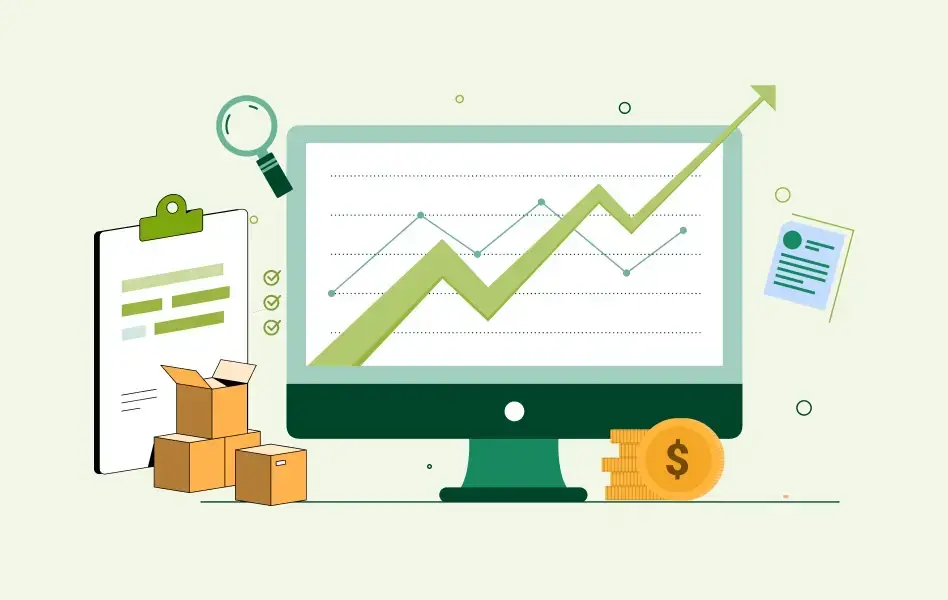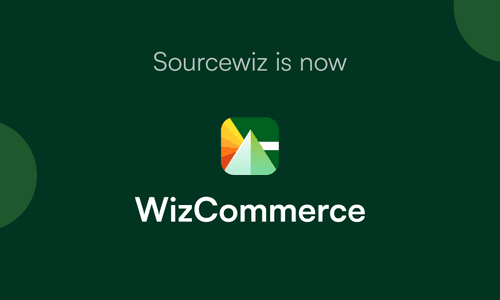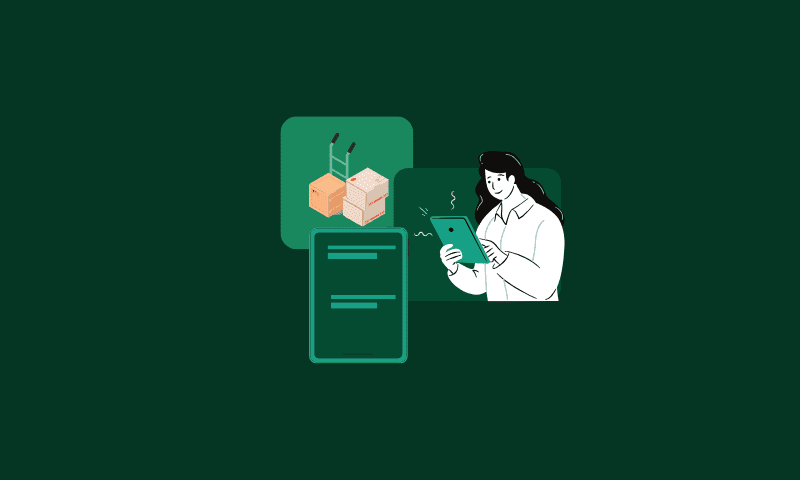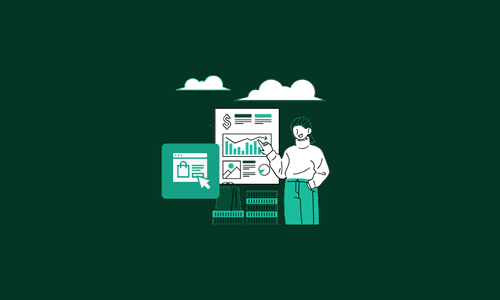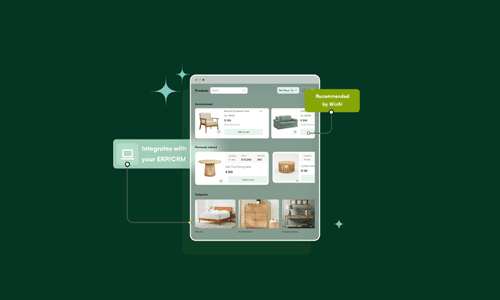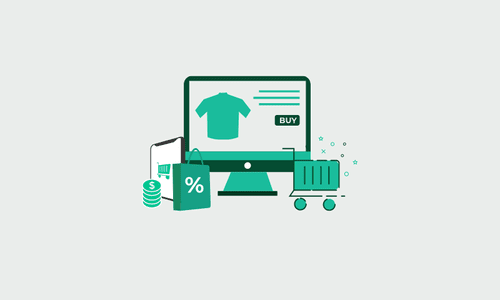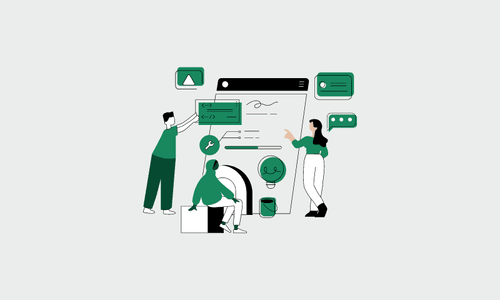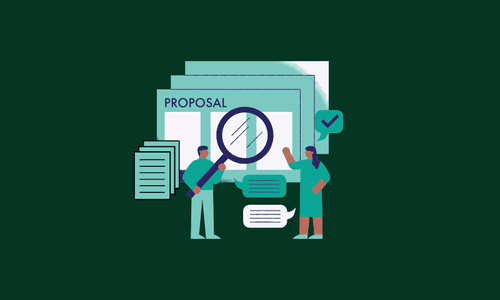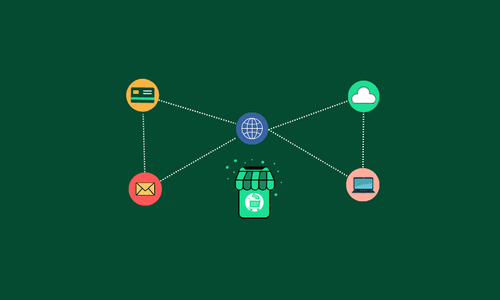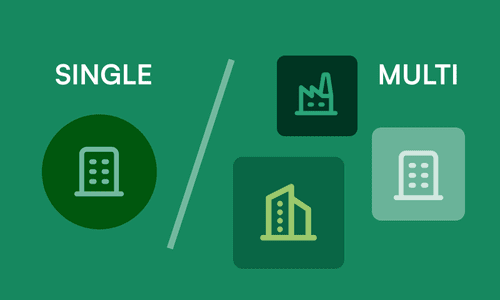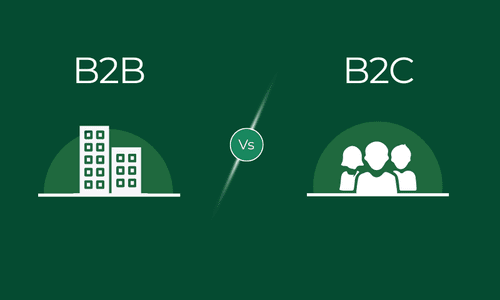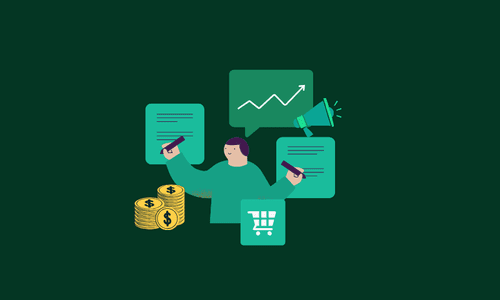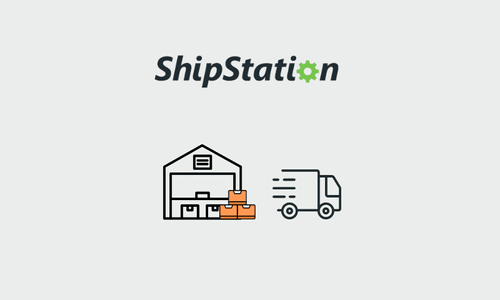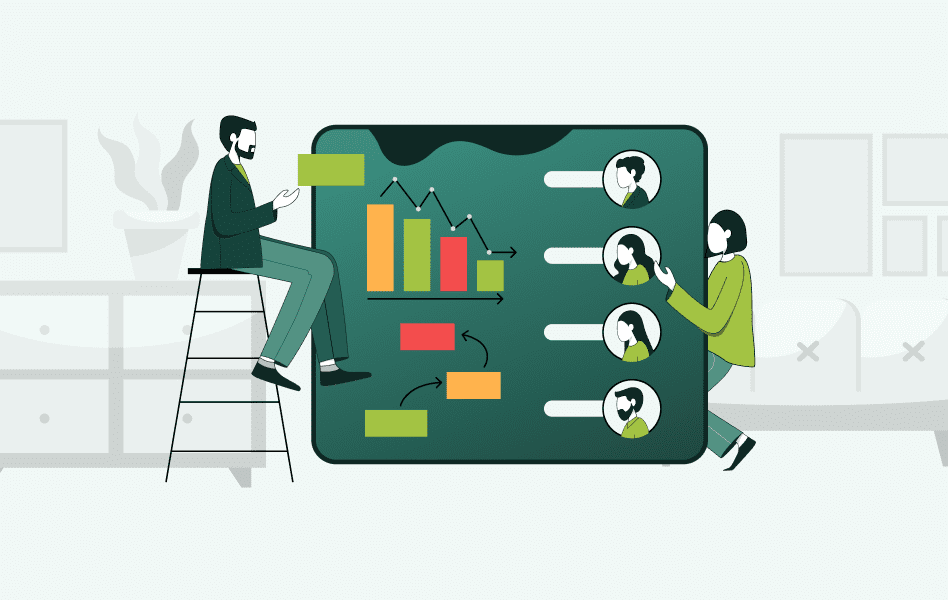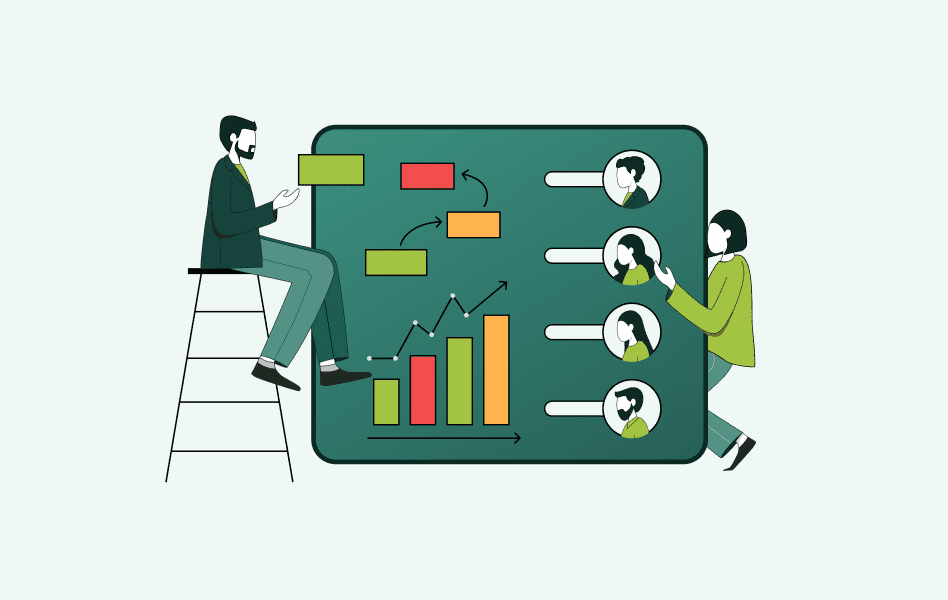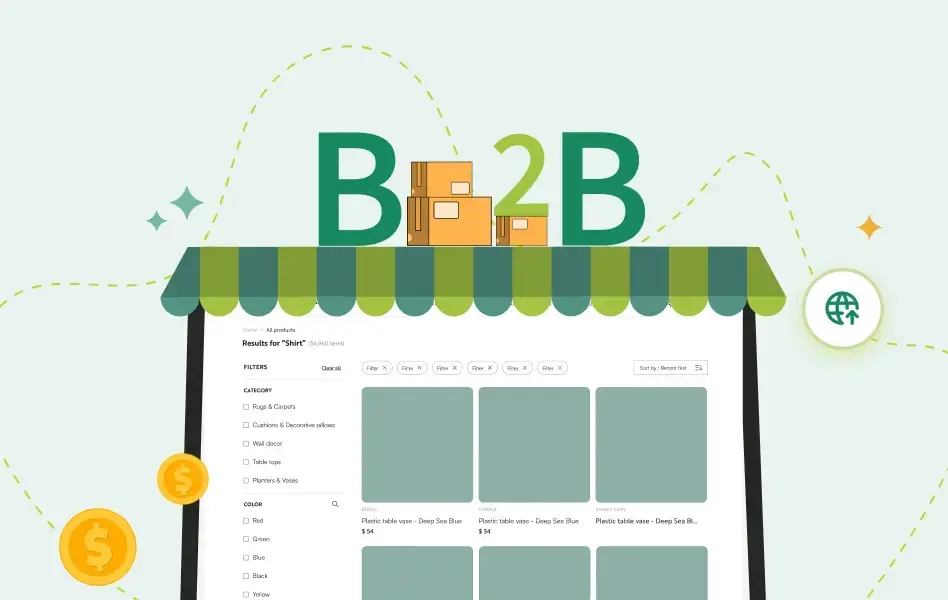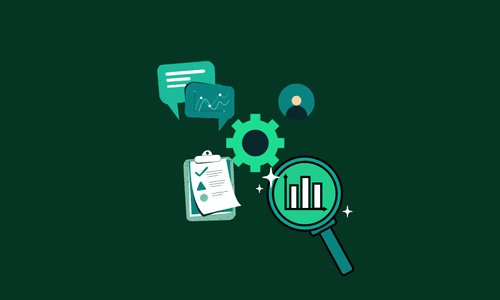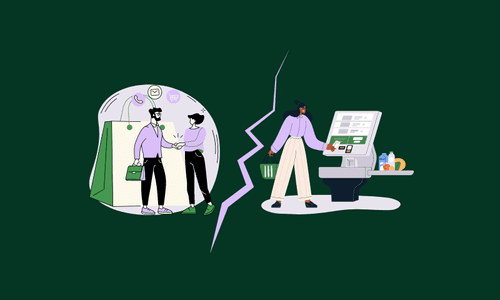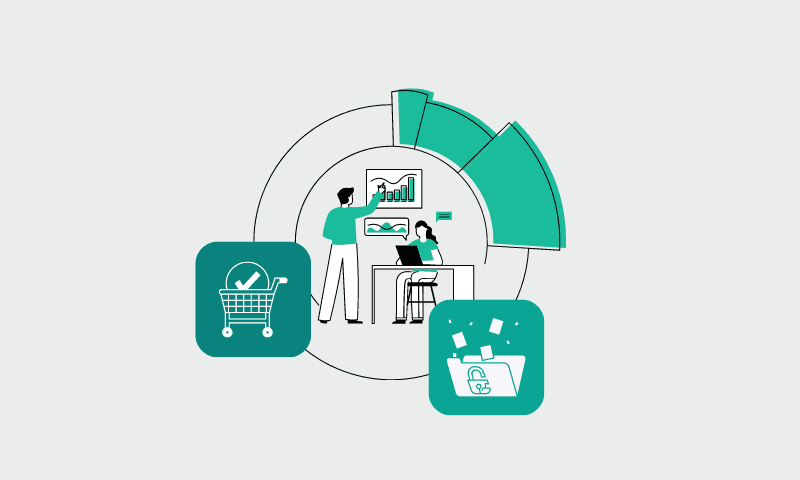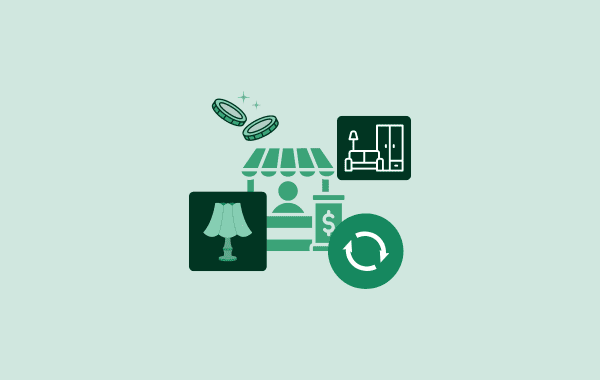Contents
- 1 What is wholesale distribution?
- 2 How does wholesale distribution work?
- 3 Types of wholesale distributors
- 4 What are the benefits of wholesale distribution?
- 5 Wholesale distribution challenges and modern solutions
- 6 How to get started with wholesale distribution?
- 7 Transform your wholesale distribution with WizCommerce
- 8 Frequently asked questions about wholesale distribution
The wholesale distribution industry represents one of the most significant yet often overlooked sectors of the global economy. Worth an astounding $17.5 trillion in the United States alone, wholesale distribution serves as the critical bridge connecting manufacturers to retailers, ensuring products reach consumers efficiently while enabling businesses to focus on their core competencies.
This massive industry facilitates the bulk purchasing and business-to-business sales that drive commerce across virtually every sector, from food and beverage to healthcare and technology.
In this article, we’ll explore the fundamental concepts of wholesale distribution, examine how the process works from sourcing to delivery, and analyze the different types of distributors serving various market segments.
What is wholesale distribution?
Wholesale distribution is the business practice of purchasing goods in bulk from manufacturers or suppliers and selling them in smaller quantities to retailers, commercial establishments, industrial users, or other professional businesses.
Unlike retail operations that sell directly to consumers, wholesale distributors operate exclusively in the business-to-business (B2B) space, serving as intermediaries that simplify the supply chain for both manufacturers and retailers.
At its core, wholesale distribution involves three key elements:
- Bulk purchasing power that enables negotiated pricing
- Inventory management across multiple product lines
- Distribution networks that efficiently move goods from production facilities to retail outlets.
This model creates value by consolidating purchasing power, providing storage and logistics services, and maintaining relationships with both suppliers and customers.
What is the difference between wholesale and retail distribution?
The wholesale distribution model differs significantly from retail operations in several ways. While retailers focus on consumer experience, marketing, and individual transactions, wholesale distributors emphasize operational efficiency, relationship management, and volume-based pricing. Wholesalers typically operate with lower profit margins per unit but achieve profitability through high-volume sales and operational scale.
| Aspect | Wholesale Distribution | Retail Distribution |
| Target Customers | Businesses, retailers, commercial users | End consumers |
| Order Quantities | Bulk purchases (hundreds/thousands) | Individual units |
| Pricing Structure | Volume-based discounts and lower prices, net terms | Fixed retail prices |
| Relationship Type | Long-term B2B partnerships | Individual transactions |
| Profit Margins | Lower per unit, higher volume | Higher per unit, lower volume |
| Sales Process | Relationship-driven, complex | Transaction-focused, simple |
The wholesale distribution ecosystem: Key players and relationships
The wholesale distribution ecosystem consists of four primary stakeholders, each playing a crucial role in moving products from production to consumption. Understanding these relationships is essential for grasping how wholesale distribution creates value across the supply chain.
Manufacturers design and produce products but lack infrastructure to serve thousands of retailers directly. Partnering with distributors lets them focus on innovation and production while accessing established distribution networks.
Wholesale distributors serve as the central hub, managing inventory, processing orders, coordinating logistics, and providing customer service. Many offer value-added services including customization, technical support, and market insights.
Retailers and businesses form the customer base – stores, e-commerce platforms, restaurants, hospitals, and contractors. They rely on distributors for consistent availability, competitive prices, and simplified ordering.
End consumers represent the final destination. Though they don’t interact with distributors directly, wholesale efficiency determines the product variety, pricing, and availability they experience.
This creates mutual value: manufacturers expand reach without sales complexity, distributors profit from volume and services, retailers access diverse products easily, and consumers benefit from better availability and pricing.
Now let’s examine how this ecosystem operates through the actual wholesale distribution process.
How does wholesale distribution work?
The wholesale distribution process involves a sophisticated workflow that seamlessly integrates multiple operational stages. From initial supplier relationships to final delivery, each step requires careful coordination and increasingly relies on technology to maintain efficiency at scale. Here’s how modern wholesale distribution operates:
1. Sourcing and Procurement
Successful wholesale distribution begins with strategic sourcing decisions that impact every downstream operation. Distributors invest significant time and resources in identifying manufacturers who can deliver the right combination of quality, price, and reliability. This isn’t just about finding the lowest cost, but about building partnerships that can sustain long-term business growth and weather market fluctuations.
Key procurement activities include:
- Supplier vetting: Quality audits, facility inspections, and sample testing
- Price negotiation: Volume discounts, payment terms, and exclusivity agreements
- Contract management: Minimum order quantities, delivery schedules, and performance metrics
- Risk mitigation: Diversifying supplier base and establishing backup sources
2. Inventory Management
Inventory management systems form the operational backbone of wholesale distribution, directly impacting both profitability and customer satisfaction. Modern distributors must master the delicate balance between having enough stock to meet demand while avoiding excessive carrying costs. With potentially thousands of SKUs across multiple warehouses, this becomes a complex orchestration requiring sophisticated systems and strategic thinking.
Critical inventory management components:
- Demand forecasting: AI-driven predictions based on historical data and market trends
- Stock optimization: ABC analysis to prioritize high-value and fast-moving items
- Warehouse management: Strategic placement for efficient picking and packing
- Real-time tracking: RFID and barcode systems for instant visibility
- Automated reordering: Trigger points that prevent stockouts while minimizing excess
3. Order Processing and Fulfillment
The moment a customer places an order, the distribution machine springs into action. Modern order processing has evolved far beyond manual paperwork and phone calls. Today’s systems handle complex pricing structures, multiple shipping locations, and varied customer requirements automatically. This is where operational efficiency directly translates to customer satisfaction and competitive advantage.
The modern order fulfillment process includes:
- Instant quote generation: Dynamic pricing based on customer tiers and order volumes
- Automated order routing: Intelligent allocation from optimal warehouse locations
- Pick-and-pack optimization: Route planning and batch picking for efficiency
- Multi-channel coordination: Synchronizing orders from web, mobile, and sales reps
- Proactive communication: Real-time updates on order status and tracking
4. Technology Integration and Optimization
The true transformation in wholesale distribution comes from seamlessly connecting all these processes through integrated technology platforms. Modern distributors leverage cloud-based systems that provide end-to-end visibility and control, enabling them to respond quickly to market changes and customer needs.
Technology-driven enhancements:
- Offline capabilities: Process orders anywhere, sync when connected
- Mobile optimization: Full functionality on tablets and smartphones for field sales
- AI-powered insights: Predictive analytics for inventory and customer behavior
- Automated workflows: Reduce manual tasks and minimize errors
- Real-time dashboards: Instant visibility into key performance metrics
Modern commerce platforms like WizCommerce are revolutionizing wholesale distribution through integrated technology solutions. WizOrder’s offline mode functionality enables sales representatives to take orders at trade shows without internet connectivity, while real-time inventory updates across all distribution channels ensure accurate stock information.
Types of wholesale distributors
The wholesale distribution industry encompasses various business models, each serving specific market needs and operational requirements.
| Distributor Type | Control Over Product/Brand | Investment Required (for Distributor) | Market Reach | Key Benefit | Best For |
| Manufacturer | Very High | Very High | Potentially Limited | Max brand control & direct feedback | Companies prioritizing control, brand consistency, specialized products |
| Exclusive | Medium-High | Medium-High | Focused/Territorial | Dedicated market focus & deep expertise | New market entry, specialized new products requiring focused effort |
| Regional | Medium | Medium | Local/Geographic | Localized market knowledge & quick delivery | Manufacturers needing strong regional presence, localized products |
| General (Independent) | Low-Medium | Low-Medium | Broad/Diverse | Wide product selection, competitive pricing | Manufacturers seeking broad reach, retailers wanting “one-stop shop” |
| Agent/Broker | Low | Low | Variable | Low capital entry, strong market connections | Market entry, highly specialized or infrequent large-volume transactions |
Manufacturer Distributors
These represent companies that produce their own products while also distributing them directly to retailers and other wholesale businesses. This integrated model provides maximum control over product quality, pricing, and brand representation. Technology companies like Apple and consumer goods manufacturers often employ this approach for their flagship products while using traditional distributors for broader market coverage.
| Best For:
|
Exclusive Distributors
These maintain contractual agreements with specific manufacturers to serve as their sole representatives in particular geographic regions or market segments. These relationships often involve significant commitments from both parties, with distributors agreeing to minimum purchase volumes and marketing support in exchange for territorial exclusivity and preferred pricing.
| Best For:
|
Regional Distributors
These focus on serving specific geographic areas, leveraging local market knowledge, relationships, and logistics capabilities. They understand regional preferences, regulatory requirements, and cultural nuances that can significantly impact product success. They often serve as the local face of national or international manufacturers who lack regional presence.
| Best For:
|
General Wholesalers
These operate as independent intermediaries, purchasing products from multiple manufacturers and selling to diverse customer bases without exclusive relationships. They compete primarily on price, service quality, and product availability. They often specialize in specific industries or product categories while maintaining flexibility to adapt their offerings based on market demands.
| Best For:
|
Agents and Brokers
These facilitate transactions between manufacturers and retailers without taking ownership of products. Instead, they earn commissions by connecting buyers and sellers, negotiating terms, and coordinating transactions. This model requires lower capital investment but depends heavily on relationship management and market expertise.
| Best For:
|
What are the benefits of wholesale distribution?
Wholesale distribution creates substantial value throughout the supply chain, providing significant advantages for manufacturers, retailers, and the broader economy. These benefits stem from the efficiency gains, risk mitigation, and specialization that wholesale distributors bring to complex supply chains.
Advantages of wholesale distribution for manufacturers
Manufacturers gain numerous strategic advantages by partnering with wholesale distributors rather than attempting to manage all customer relationships directly.
01. Expanded market reach without sales complexity
Distributors provide instant access to thousands of retailers through established networks, eliminating the need for manufacturers to build expensive direct sales teams. This reach is particularly valuable for smaller manufacturers who lack resources for extensive customer acquisition.
02. Operational focus and simplification
Instead of managing relationships with countless retailers, manufacturers work with select distributors, reducing administrative overhead significantly. This allows manufacturers to concentrate resources on core competencies like product development, production optimization, and quality control.
03. Improved cash flow and reduced risk
Distributors assume inventory holding responsibilities and typically offer faster payment terms than individual retailers. They also absorb demand fluctuations, customer credit risks, and market volatility through their diversified customer bases, providing manufacturers with more predictable revenue streams.
Benefits of wholesale distribution for retailers and businesses
Retailers and other businesses that purchase from wholesale distributors enjoy numerous operational and financial advantages that enhance their competitive positioning and operational efficiency.
01. Significant cost savings
Distributors’ bulk purchasing power delivers significantly lower procurement costs compared to direct manufacturer relationships. These savings stem from volume discounts, consolidated shipping, and reduced administrative expenses from managing fewer supplier relationships.
02. Enhanced product variety and availability
Working with distributors provides access to a wide variety of products from multiple manufacturers through a single relationship. This simplifies procurement while expanding product selection, allowing retailers to offer comprehensive inventory without managing numerous individual supplier contracts.
03. Streamlined operations
Retailers consolidate purchasing through fewer relationships, each offering standardized terms, delivery schedules, and administrative processes. Modern platforms like WizShop further enhance efficiency through login-based pricing that protects margins, one-click reorders for repeat purchases, and pre-saved billing details that reduce order processing time.
04. Supply chain reliability
Distributors maintain buffer inventory and backup supplier relationships, reducing stockout risks. Their logistics expertise and warehouse networks ensure consistent product availability and faster delivery times than direct manufacturer relationships typically provide.
While these benefits are substantial, wholesale distributors face significant challenges in today’s evolving market landscape that require innovative solutions.
Wholesale distribution challenges and modern solutions
Today’s distributors face pressure from multiple directions like evolving customer expectations, digital disruption, and increasingly complex supply chains.
Intensified competition from multiple channels
Traditional wholesale distributors now compete with online marketplaces, direct-from-manufacturer sales, and even their own customers who may bypass them entirely. This multi-front competition squeezes margins and threatens established customer relationships, forcing distributors to justify their position in the supply chain.
Rising customer expectations
B2B buyers now expect the same seamless experiences they enjoy as consumers. Real-time inventory visibility, instant pricing, mobile ordering, and intuitive search capabilities. Yet many distributors still rely on phone orders, email quotes, and spreadsheet-based catalogs that frustrate buyers accustomed to instant digital experiences.
Customer retention in commoditized markets
With products increasingly viewed as commodities, customer loyalty erodes quickly. Distributors struggle to identify which customers are at risk, which have growth potential, and how to personalize their approach at scale. Traditional CRM for wholesalers provide data but lack actionable intelligence.
Complex payment processing
B2B payments remain frustratingly complex, with multiple payment terms, credit limits, approval hierarchies, and methods ranging from traditional checks to digital payments. This complexity leads to delayed payments, increased administrative costs, and poor customer experience.
Supply chain visibility
Supply chains remain volatile with unpredictable lead times and frequent disruptions. Distributors must balance inventory investment against stockout risks while managing thousands of SKUs across multiple locations. Poor visibility leads to excess inventory, stockouts, and dissatisfied customers.
Disconnected teams and systems
Sales teams in the field often lack access to real-time information, leading to promises the warehouse operations cannot fulfill. Manual processes for quotes, orders, and customer information create delays and errors, frustrating customers and creating internal inefficiencies.
Advanced B2B wholesale platforms like WizCommerce address these key challenges through integrated solutions that unify sales, operations, and customer data. From AI-powered lead scoring that helps identify high-priority customers to one-click quote-to-order conversion that reduces friction, the platform tackles each pain point with purpose-built solutions.
Understanding these challenges and solutions is essential, but the real question is: how do you actually get started or transform your existing wholesale distribution operations?
How to get started with wholesale distribution?
Whether you’re launching a new wholesale distribution business or modernizing existing operations, success requires careful planning, the right technology infrastructure, and proven implementation strategies.
Step 1: Choosing your wholesale distribution model
Your foundational decision is selecting the distribution model that best fits your resources, market opportunity, and long-term growth ambitions. Each path requires different levels of investment and operational focus.
Option 1: Becoming a general wholesaler
What it is: You buy products in bulk from multiple manufacturers and resell them to a diverse customer base (retailers, businesses) without exclusive agreements.
When this is for you: You seek flexibility in product sourcing, aim for broad market reach, and compete on volume, price, and extensive selection.
Identify profitable product categories with high demand. Build relationships with various suppliers to secure competitive pricing. Your strength will be offering a “one-stop shop” for your customers.
Option 2: Becoming a specialty or exclusive distributor
What it is: You forge close, often contractual, relationships with specific manufacturers, potentially gaining exclusive rights to distribute their products within a defined territory or market segment.
When this is for you: You want to offer deep expertise in a particular product line, provide extensive value-added services (e.g., technical support, specialized marketing), and build strong, dedicated manufacturer partnerships.
Vet manufacturers rigorously. Research their product quality, customer demand, and your potential for long-term growth with them. Understand the terms of exclusivity and the support expected from both sides.
Option 3: Launching as a manufacturer-distributor
What it is: You produce your own products and simultaneously manage all aspects of their distribution directly to retailers, other businesses, or even specific end-users.
When this is for you: You are both a producer and seek maximum control over your product’s journey, brand experience, and direct customer relationships.
Calculate your true costs. Do not underestimate the investment needed for robust warehousing, a dedicated logistics network, a capable sales force, and comprehensive technology in addition to your manufacturing operations.
Technology requirements for modern wholesale distribution
Selecting the right technology platform can make or break your wholesale distribution business. Modern distributors need integrated systems that manage everything from supplier relationships to customer orders without requiring massive IT investments.
Essential platform capabilities:
- Integrated order management: Your system must handle quotes, orders, and invoicing seamlessly. Look for platforms where sales reps can access real-time inventory, create quotes, and convert them to orders instantly.
- Multi-channel selling: Today’s distributors need B2B e-commerce portals, mobile apps for field sales, and traditional phone/email order capabilities—all synchronized in real-time.
- Inventory visibility: Track stock levels across locations, set automatic reorder points, and provide accurate availability to customers. Integration with supplier systems helps maintain optimal inventory levels.
- Financial management: Choose platforms that integrate with accounting systems like QuickBooks or NetSuite, eliminating double entry and ensuring accurate financial reporting.
Ensure your chosen platform connects seamlessly with your existing tools and inventory management software. ERP integration synchronizes financial data, while Customer Relationship Management (CRM) maintains customer information. Modern platforms offer pre-built connectors for popular systems and APIs for custom integrations. Prioritize platforms where data flows automatically between systems.
Success strategies for wholesale distributors
Building a profitable wholesale distribution business requires more than just buying and selling products. Success comes from operational excellence, strategic partnerships, and continuous improvement.
- Secure profitable and strong supplier relationships: Negotiate favorable terms and build strong, credible partnerships with your suppliers.
- Build your customer base strategically: Target underserved markets and offer superior service, leveraging technology for online ordering and real-time visibility.
- Optimize operations from day one: Implement efficient, automated processes for inventory tracking, order management, and fulfillment using modern platforms.
- Leverage data for growth: Continuously track key metrics and use analytics to identify profitable products, customers, and growth opportunities.
- Scale your distribution business wisely: Design processes and choose technology that supports growth, documents operations, and maintains service quality as you expand.
Achieving these strategies efficiently and effectively demands a powerful, integrated solution, making WizCommerce the optimal partner for your wholesale distribution journey.
Transform your wholesale distribution with WizCommerce
Modern wholesale distribution demands sophisticated solutions to thrive. WizCommerce provides a comprehensive answer, transforming traditional operations into efficient, AI-powered distribution networks.
- WizOrder: Enables efficient sales management through digital catalogs, custom wishlists, and bulk purchasing. It provides personalized customer tabs with order history and facilitates quick product selection with scan-and-add-to-cart labels for trade shows. This contributes to reducing order taking time by 83% and cutting quote-to-cash time by 80%.
- WizShop: Offers comprehensive omnichannel order visibility across online, offline, and ERP systems. It supports unlimited SKU additions and allows for custom branded websites, complemented by detailed sales reports. Businesses have observed a 20% increase in online revenue in 3 months.
- WizAI: Provides intelligent assistance with the Ask Kai AI assistant and lifestyle image generation. Features like abandoned cart tracking and AI-powered upselling have led to a 25% increase in average order value (AOV) for recurring orders.
- WizPay: Supports flexible payment methods including credit-based and standard refunds, and ACH payments. It boasts a 99.99% uptime record and includes automatic expired card updates to ensure smooth transactions.
Ready to see how WizCommerce can revolutionize your wholesale operations? Request a demo today to explore these features firsthand.
Frequently asked questions about wholesale distribution
What is an example of wholesale distribution?
A common example of wholesale distribution is a food service distributor. Imagine a company that buys large quantities of goods like fresh produce, meats, dairy, and dry goods directly from various farms and food manufacturers. They then store these items in large warehouses, break them down into smaller, manageable orders, and deliver them to restaurants, hotels, schools, and catering companies.
How do I get into wholesale distribution?
To enter wholesale distribution, first, identify a specific product niche and develop a detailed business plan. Next, establish direct relationships with manufacturers for product sourcing and set up the necessary infrastructure, including warehousing and logistics. Ensure you obtain all required business licenses and permits. Finally, focus on building a robust customer base of retailers or businesses and implement modern technology for efficient operations.
Is it better to be a distributor or a wholesaler?
Neither is inherently “better”; the choice depends on your business model. A wholesaler typically buys from multiple sources and sells broadly, focusing on volume and competitive pricing. A distributor often has a closer, sometimes exclusive, relationship with specific manufacturers, providing value-added services like marketing and technical support.
Is Amazon a wholesale distributor?
Amazon primarily operates as a retailer (selling directly to consumers) and a marketplace platform (enabling third-party sellers to reach consumers). While it has massive purchasing power and logistics similar to a wholesaler, its core business model focuses on the direct-to-consumer relationship, rather than traditionally supplying products in bulk to other retailers for resale.


